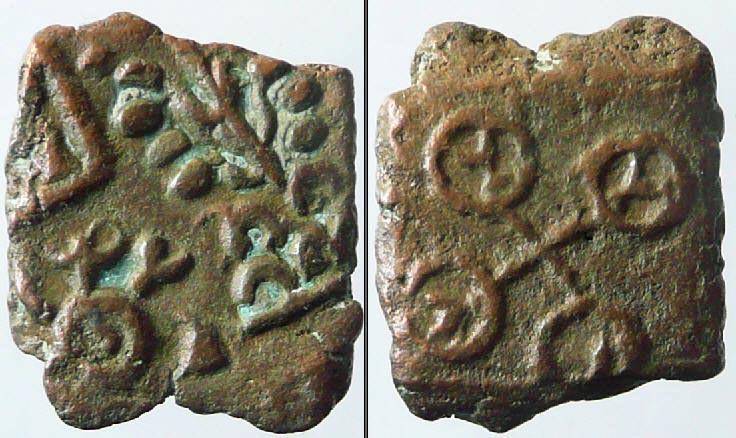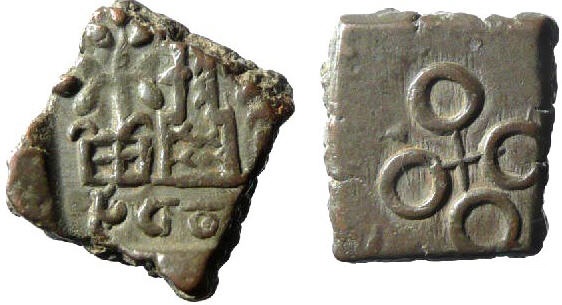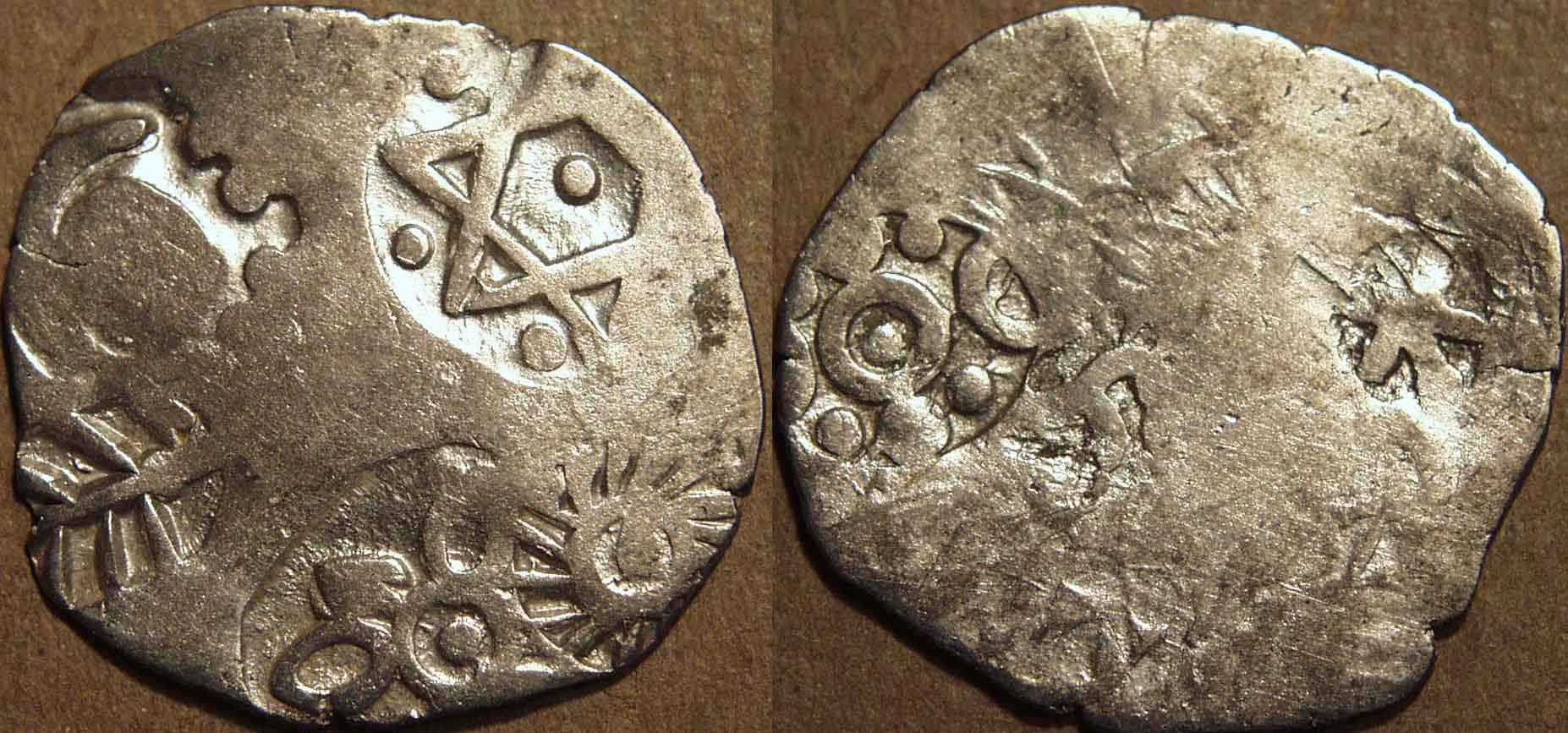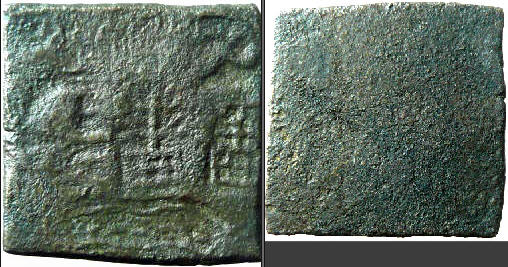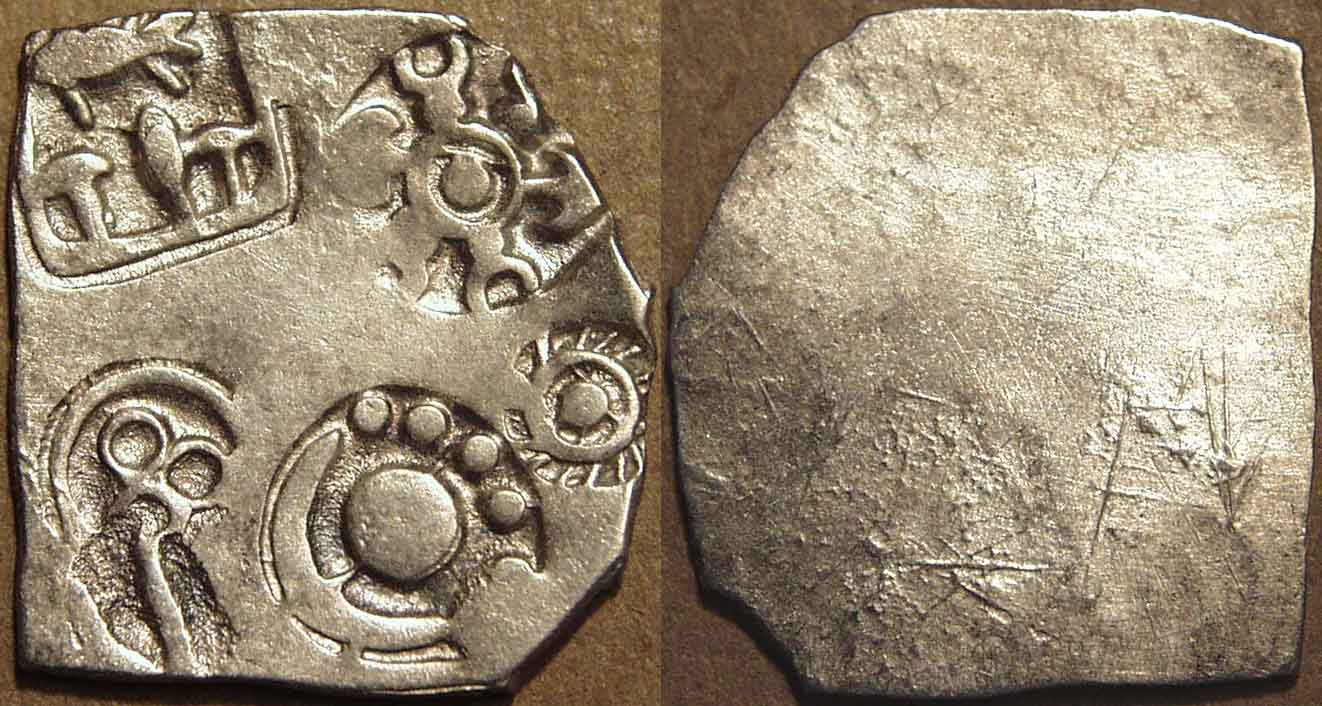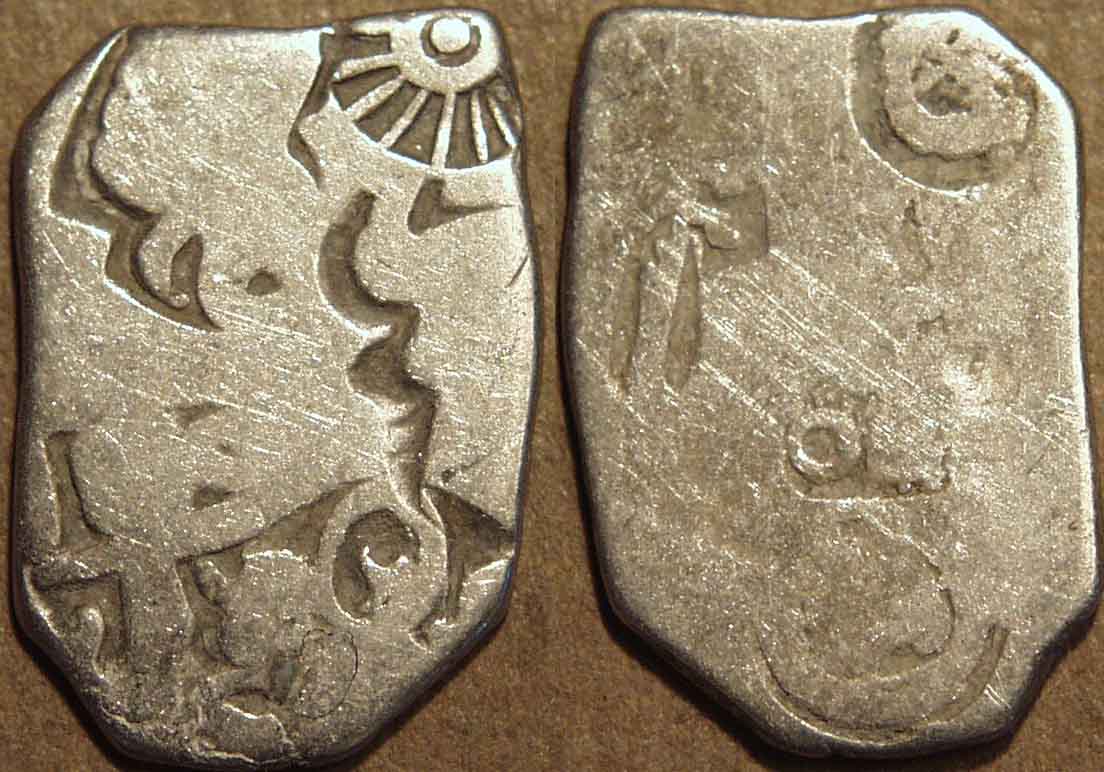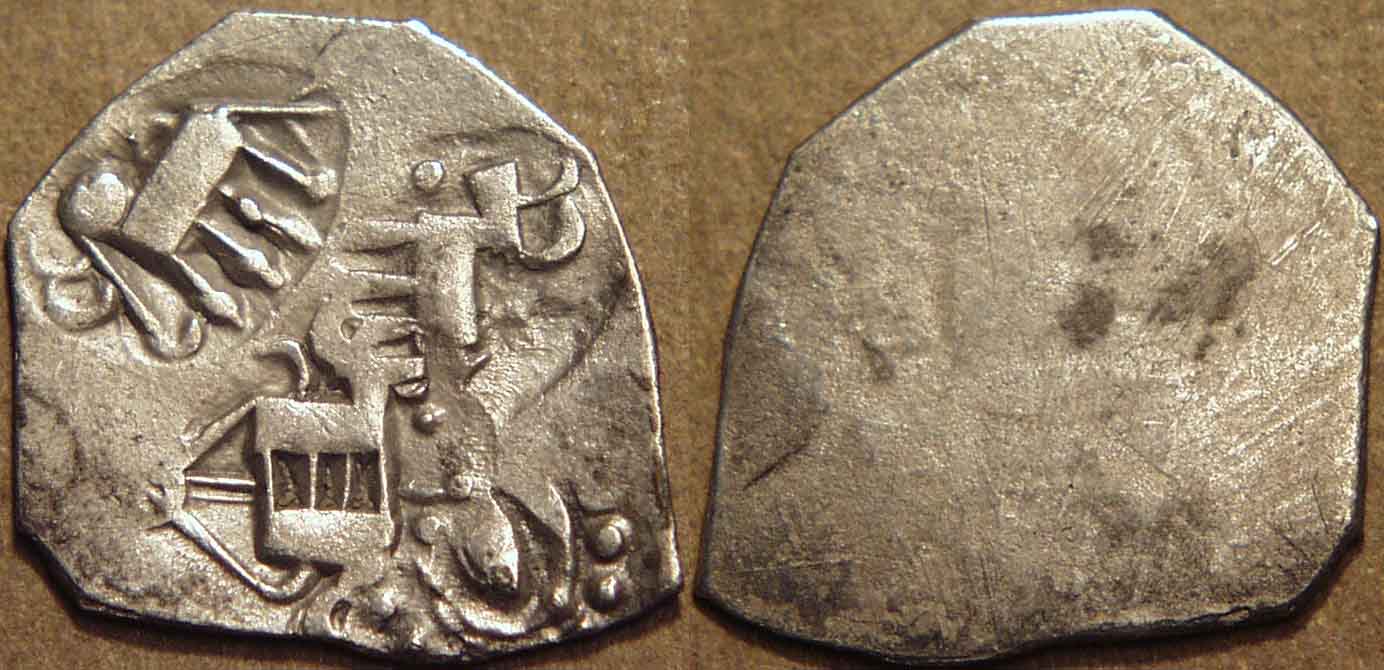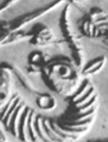GK Chesterton's Invisible Man is an extraordinary detective story. Here is an excerpt with the famous statement of the famous detective Father Brown, 'nobody ever notices postmen somehow'.
Many decipherment claims on Indus Script have somehow missed the postmen of the Script.
There are literally millions of ancient coins from mints of an extensive area from Takṣaśila to Anuradhapura which continued to use Indus Script Hieroglyphs and Hypertexts with an astonishing regularity proclaiming the repertoire of the mints -- metalworkshops of the Metals Age Revolution Before Common Era.
[quote]“You are not mad,” said Brown, “only a little unobservant. You have not noticed such a man as this, for example.”
He took three quick strides forward, and put his hand on the shoulder of an ordinary passing postman who had bustled by them unnoticed under the shade of the trees.
“Nobody ever notices postmen somehow,” he said thoughtfully; “yet they have passions like other men, and even carry large bags where a small corpse can be stowed quite easily.”
The postman, instead of turning naturally, had ducked and tumbled against the garden fence. He was a lean fair-bearded man of very ordinary appearance, but as he turned an alarmed face over his shoulder, all three men were fixed with an almost fiendish squint.
[unquote]
See:Harappa Script continuum on punch-marked coin symbols.Insights of Fabri et al validated by Meluhha Script cipher http://tinyurl.com/gu24z4h
This is a tribute to Pran Nath, KN Dikshit and CL Fabri who had provided insights citing parallels between Harappa (Indus Script) and symbols on Punch-marked coins.
See:
What do the symbols on ancient Indian coins (e.g. punch-marked coins or cast coins with embossed/inscribed symbols) signify?
This monograph posits Indus Script continuum and hyertexts on ancient Indian coins as signifiers of metalwork wealth-creation activities in ancient mints -- which are a legacy of the Bronze Age Tin-Bronze revolution mediated by seafaring merchants and artisans of ancient Bhāratam.
Punch-marked coins are referred to as paharaṇa mudra in Indian sprachbund (language union). The symbols on such ancient coins signify wealth of metalwork, a continuum of Indus Script tradition of rebus rendering in Meluhha of metalwork wealth account ledger entries (kharaḍā). This kharaḍā, wealth account ledger entries is signified by the Indus Script Hieroglyph Sign 176![]() khareḍo'a currycomb (Gujarati) Rebus: karaḍā खरडें 'daybook, wealth-accounting ledger'. Rebus: kharādī' turner' (Gujarati)
khareḍo'a currycomb (Gujarati) Rebus: karaḍā खरडें 'daybook, wealth-accounting ledger'. Rebus: kharādī' turner' (Gujarati)
The symbols on ancient coins signify metalwork wealth produced in ancient mints.
![]()
With the decipherment of Meluhha script & langauge of the Corpora of Inscriptions dated from ca. 3300 BCE (which is the date of the Harappa potsherd with three inscribed hieroglyphs signifying tagara 'tabernae montana' rebus: tagara 'tin'), it is now possible to delineate a glossary of hieroglyphs and readings in Meluhha for the parallels identified in a brilliant and lucid article of 1834 in JRAS.
Find spots of ancient coins of IndiaFind spots of late hoards of India Punch-marked coins
JOURNAL ARTICLE
A Survey of Late Hoards of Indian Punch-marked Coins
ELIZABETH ERRINGTON The Numismatic Chronicle (1966-) Vol. 163 (2003), pp. 69-121
The Emergence and Spread of Coins in Ancient India -- Deme Raja Reddy (2014)
Abstract
![Image result for ancient india deme raja reddy]()
This communication describes the emergence and spread of coins in ancient India. The barter system of exchange of goods was prevalent in ancient India from the Vedic period. The Indus valley people may have used precious metals of fixed weights such as silver for buying goods which is evident from excavations in the DK area at Mohenjo-Daro. But eventually barter method gave way slowly to the money economy through the medium of coins for their obvious advantages. The origin of coins, also known as metallic money in India dates back to the sixth–seventh centuries BC and it is probable that Lydia, India and China invented coinage around the same time and also independent of each other. The emergence of coinage was one of the important monetary innovations in ancient India. The formation of ‘janapadas’ and the evolution of the second urbanization were the catalysts for the invention of coinage. The money economy originated in India during the ‘janapada’ period and it grew markedly during the Magadha, Nanda and Mauryan rule which needed the maintenance of a huge army as well as official machinery to run the big empire. Coinage and urbanization which are linked also facilitated the growth of trade in the country internally as well as with other countries. Maritime trade prospered especially with Rome during the Satavahana rule in the Deccan. The lack of trade barriers between ‘janapadas’ and the presence of local rulers even during the rule of major dynasties might have contributed to the growth of trade.
References
Agrawala, V. S. (1953). India as known to Panini. Lucknow: University of Lucknow.
Ali, S. M. (1966). The geography of the Puranas. New Delhi: People’s Publishing House.
Aravamuthan, T.G. (1936). A new type of punch marked coin. In Transactions of the International Numismatic Congress, London (pp. 393–400), June 30–July 6.
Ball, V. (1989). Travels in India by Jean Baptiste Tavernier. New Delhi: Atlantic Publishers and Distributors (French original 1676 and English original 1889).
Berghaus, P. (1996). Roman coins from South India. The Studies in South Indian Coins, 6, 7–13.
Chatterji, B. (1991). Barter system in early Indian economy. Journal of the Numismatic Society of India, 53, 150–153.Cribb, J. (1983). Investigating the introduction of coinage in India: A review of recent research. Journal of the Numismatic Society of India, 45, 80–101.
Cunningham, A. (1963). Coins of ancient India: From the earliest times down to the seventh century AD (p. 43). Varanasi: Indological Book House.
Das Gupta, J. N. (1913). Megasthenes and Arrian. A bird’s eye view of their accounts of ancient India, (pp. 56–62) Calcutta.
Deloche, J. (2010). Roman trade routes in South India: Geographical and technical considerations (1st century BC–5th century AD). Indian Journal of History of Science, 45(1), 33–46.
Deo, S. B. (1962). Another ship type of coin of Yajna Satakarni. Journal of the Numismatic Society of India, 24, 174.
Gardner, P. (1918). A history of ancient coinage 700–300 BC (pp. 56–59). New Delhi: Oriental Books Reprint Corporation.
Goyal, S. (2009). A history of the emergence of the Indian coinage. In Studies in Indian Coinage (special centenary volume), The Numismatic Society of India (pp. 58–59). Varanasi: Banaras Hindu University.
Gupta, P. L. (1963). The amaravati hoard of silver punch-marked coins. In Andhra Pradesh Government museum series, The Government of Andhra Pradesh (p. 1). Hyderabad.
Gupta, P. L. (1994). Silver punch marked coins of Magadha. Numismatic Digest, 43, 1–18.
Gupta, P. L., & Hardaker, T. R. (1985). Ancient Indian silver punch marked coins of the Maghada-Maurya karsapana series(pp. 1–2). Anjaneri: Indian Institute of Research in Numismatic Studies.
Hourani, G. F., & Carswel, J. (1995). Arab seafaring in the Indian ocean in ancient and early medieval times (p. 90). Princeton: Princeton University Press.
Jain, R. (1962). Ancient Indian coinage (pp. 9–19). New Delhi: D. K. Print World Ltd.
Jha, S. K. (1998). Beginning of urbanization in early historic India: A study of the gangetic plains. Patna: Novelty & Co.
Kamalakar, G., & Veerender, M. (1991). Coins from Veerapuram excavations. In Numismatic bulletin, (Vol. 3, p. 43). Hyderabad: Birla Archaeological and Cultural Research Institute.
Kosambi, D. D. (1966). Punch marked coins of the Amaravati hoard: Chronology of punch marked coins. India: Numismatic Society of India.
Kosambi, D. D. (1981). Indian numismatics (p. 36). New Delhi: Orient Longman., M. S. (1992). Roman coins from South India: A study based on distribution and typology. Studies in South Indian Coins, 2, 61–67.
Mitchiner, M. (1995). The numismatic record in India of early maritime trade. Journal of the Numismatic Society of India,57, 60–71.
Puljal, A., & Reddy, D. R. (2005). Andhra Janapada coins from Singavaram. Journal of the Oriental Numismatic Society,185, 8–18.
Radhakrishnan, P. V. (1999). Roman gold and silver coins from India (pp. 13–42). Anjaneri, Nasik: Indian Institute of Research in Numismatic Studies.
Rajgor, D. (2001). Punch marked coins of early historic India (pp. 1–10). California: Reesha Book International.
Ray, S. C. (1993). Stratigraphy and Indian coins. Journal of the Numismatic Society of India, 55, 1–11.
Reddy, D. R., Acharyulu, G. V. R. K., & Kamakshiah, M. (2007). Statistical analysis of Amaravati hoard of imperial type of punch marked coins. Studies in South Indian Coins, 17, 102–111.
Reddy, D. R., & Puljal, A. (2006). Double obverse Singavaram coins. The Journal of the Numismatic Society of India, 68, 31–34.
Reddy, D. R., & Reddy, P. S. (1984). Uninscribed coins of Andhra. Hyderabad: The Numismatic Society of Hyderabad.
Reddy, D. R., & Reddy, P. S. (1987). Kotalingala coinage of Satavahanas and other local rulers: A profile (pp. 1–2). Hyderabad: The Numismatic Society of Hyderabad.
Reddy, D. R., & Reddy, P. S. (1991). Satavahana coins from Chebrolu. The Journal of the Numismatic Society of India, 53, 49–51.
Sarma, I. K. (1994). A critical study of the numismatic evidences from Nagarjunakonda excavations. The Studies in South Indian Coins, 4, 79–86.
Schaps, D. M. (2007). The invention of coinage in Lydia, India and in China. Parts I & II. Bulletin du Cercle d’Etudes Numismatiques, 44(1, 2), 281–300, 313–322.
Sridhar, T. S. Suresh, S., & Sundararajan, N. (2011). Roman coins in the government Muséum (p. 125), Chennai.
Thakur, U. (1967). A study of barter and exchange in ancient India. Indian Numismatic Chronicle, 6, 1.
Tripathi, R. S. (1967). History of ancient India (p. 145). New Delhi: Motilal Banarsidas.
Walsh, E. H. C. (1940). Paila hoard of punch marked coins. Journal of the Numismatic Society of India, 1, 15.
Examples of ancient coins with Indus Scrit Hieroglyphs/Hypertexts
![]()
Sunga Empire, AE 1/2 Karshapana, c.187 BC-78 BCE
(No legend)
Elephant standing left facing tree, swastika above
(No legend)
Mountain, anchor, altar and voided cross
12mm x 14mm, 1.80g (across the flats)
Mitchener ACW 4378
kammaṭamu 'portable goldsmith's furnace' rebus: kammaṭa 'mint, coiner, coinage'
karibha ‘elephant trunk’ ibha ‘elephant’ rebus: karb ‘iron’ ib ‘iron’.
sattuvu (Kannada), svastika: sāthiyo (G.); satthia, sotthia (Pkt.) rebus: sattuvu pewter (Kannada), jasta 'zinc' (Hindi)
kaṇḍ 'fire-altar' (Santali)
kuṭi 'tree' rebus: kuṭhi 'smelter'
OP. koṭhārī f. ʻ crucible ʼ(CDIAL 3546) Rebus: koṭhār 'treasury, warehouse' PLUS ḍāng 'mountain range' Rebus: dhangar 'blacksmith'.![]()
Sunga Empire, AE 1/8 Karshapana, c.187 BC-78 BCE, Taxila Mint
(No legend)
Voided cross
(No legend)
Tree
11mm x 12mm, 1.36g
Mitchener ?
kaṇḍ 'fire-altar' (Santali)kuṭi 'tree' rebus: kuṭhi 'smelter'https://www.beastcoins.com/India/India.htm
![]()
Northern India-Pushkalavati, AE Unit, Uncertain Period (No legend)
Elephant advancing right
(No legend)
Lunar hill13mm x 14mm, 2.46gkaribha ‘elephant trunk’ ibha ‘elephant’ rebus: karb ‘iron’ ib ‘iron’.
OP. koṭhārī f. ʻ crucible ʼ(CDIAL 3546) Rebus: koṭhār 'treasury, warehouse' PLUS ḍāng 'mountain range' Rebus: dhangar 'blacksmith'.
![Image result for kosambi numismatics]()
![Image result for indian tribal coins]()
![Image result for indian coins bopearachchi]()
![Image result for indian coins bopearachchi]()
![Image result for indian coins parmeshwari lal gupta]()
![Image result for indian coins cunningham]()
![Image result for ancient india deme raja reddy]()
![Punchmarked Coinage Of The Indian Subcontinent]()
![Decoding Of Their Indus Brahmi]()
![Bharatiya Sikke]()
![Ghaghara Gandak River]()
![Tracking The Silver]()
![Numismatic Digest]()
![Saurashtra]()
![Coins Of Malhar]()
![Kosala State Region]()
![]() ayo 'fish' rebus: aya 'iron' (Gujarati) ayas 'metal (tin+ copper alloy)' (Rigveda) PLUS karavu'crocoile' (Telugu) rebus: khār 'blacksmith' (Kashmiri) Together, ayakara 'metalsmith' (Pali)
ayo 'fish' rebus: aya 'iron' (Gujarati) ayas 'metal (tin+ copper alloy)' (Rigveda) PLUS karavu'crocoile' (Telugu) rebus: khār 'blacksmith' (Kashmiri) Together, ayakara 'metalsmith' (Pali)
barad, barat 'ox' Rebus: भरत (p. 603) [ bharata ] n A factitious metal compounded of copper, pewter, tin &c.(Marathi) PLUS pattar 'trough'; rebus pattar, vartaka 'merchant, goldsmith' (Tamil) பத்தர்² pattar , n. < T.battuḍu. A caste title of goldsmiths; தட்டார்.
पोळ pōḷa 'zebu, a bull set at liberty' पोळ pōḷa 'magnetite (a ferrite ore)'
rango 'buffalo' rebus: rango 'pewter' PLUS kolmo 'rice plant' rebus: kolimi'smithy, forge'
![]() karabha 'trunk of elephant' ibha 'elephant' rebus: karba 'iron' ib 'iron'
karabha 'trunk of elephant' ibha 'elephant' rebus: karba 'iron' ib 'iron'
kola 'tiger' Rebus:kol 'working in iron' kolhe 'smelter' kol 'blacksmith' PLUSkrammara 'look back' rebus: kamar 'smith, artisan' PLUS kuṭi 'tree' rebus: kuṭhi 'smelter'
1. koDiya ‘rings on neck’, ‘young bull’ koD ‘horn’ rebus 1: koṭiya 'dhow, seafaring vessel' khōṇḍī 'pannier sack' खोंडी (p. 216) [ khōṇḍī ] f An outspread shovelform sack (as formed temporarily out of a कांबळा, to hold or fend off grain, chaff &c.) khOnda ‘young bull’ rebus 2: kOnda ‘lapidary, engraver’ rebus 3: kundAr ‘turner’ कोंड [kōṇḍa] A circular hamlet; a division of a मौजा or village, composed generally of the huts of one caste. खोट [khōṭa] Alloyed--a metal
2. sangaḍa ‘lathe’ sanghaṭṭana ‘bracelet’ rebus 1: .sanghāṭa ‘raft’ sAngaḍa ‘catamaran, double-canoe’rebus čaṇṇāḍam (Tu. ജംഗാല, Port. Jangada). Ferryboat, junction of 2 boats, also rafts. 2 jangaḍia 'military guard accompanying treasure into the treasury' ചങ്ങാതം čaṇṇāδam (Tdbh.; സംഘാതം) 1. Convoy, guard; responsible Nāyar guide through foreign territories. rebus 3: जाकड़ ja:kaṛ जांगड़ jāngāḍ‘entrustment note’ जखडणें tying up (as a beast to a stake) rebus 4: sanghāṭa ‘accumulation, collection’ rebus 5. sangaDa ‘portable furnace, brazier’ rebus 6: sanghAta ‘adamantine glue‘ rebus 7: sangara ‘fortification’ rebus 8: sangara ‘proclamation’ 9: samgraha, samgaha 'arranger, manager'.
kkharā 'hare' (Oriya): *kharabhaka ʻ hare ʼ. [ʻ longeared like a donkey ʼ: khara -- 1?]N. kharāyo ʻ hare ʼ, Or. kharā, °riā, kherihā, Mth. kharehā, H. kharahā m(CDIAL 3823) ``^rabbit'' Sa. kulai `rabbit'.Mu. kulai`rabbit'. KW kulai @(M063) खरगोस (p. 113) kharagōsa m ( P) A hare. (Marathi) Rebus: khār खार् 'blacksmith' (Kashmiri) ![]() So. ayo `fish'. Go. ayu `fish'. Go <ayu> (Z), <ayu?u> (Z),, <ayu?> (A) {N} ``^fish''. Kh. kaDOG `fish'. Sa. Hako `fish'. Mu. hai (H) ~ haku(N) ~ haikO(M) `fish'. Ho haku `fish'. Bj. hai `fish'. Bh.haku `fish'. KW haiku ~ hakO |Analyzed hai-kO, ha-kO (RDM). Ku. Kaku`fish'.@(V064,M106) Mu. ha-i, haku `fish' (HJP). @(V341) ayu>(Z), <ayu?u> (Z) <ayu?>(A) {N} ``^fish''. #1370. <yO>\\<AyO>(L) {N} ``^fish''. #3612. <kukkulEyO>,,<kukkuli-yO>(LMD) {N} ``prawn''. !Serango dialect. #32612. <sArjAjyO>,,<sArjAj>(D) {N} ``prawn''. #32622. <magur-yO>(ZL) {N} ``a kind of ^fish''. *Or.<>. #32632. <ur+GOl-Da-yO>(LL) {N} ``a kind of ^fish''. #32642.<bal.bal-yO>(DL) {N} ``smoked fish''. #15163. (Munda Etyma) Rebus: aya 'iron' ayas 'metal alloy' (Rigveda)
So. ayo `fish'. Go. ayu `fish'. Go <ayu> (Z), <ayu?u> (Z),, <ayu?> (A) {N} ``^fish''. Kh. kaDOG `fish'. Sa. Hako `fish'. Mu. hai (H) ~ haku(N) ~ haikO(M) `fish'. Ho haku `fish'. Bj. hai `fish'. Bh.haku `fish'. KW haiku ~ hakO |Analyzed hai-kO, ha-kO (RDM). Ku. Kaku`fish'.@(V064,M106) Mu. ha-i, haku `fish' (HJP). @(V341) ayu>(Z), <ayu?u> (Z) <ayu?>(A) {N} ``^fish''. #1370. <yO>\\<AyO>(L) {N} ``^fish''. #3612. <kukkulEyO>,,<kukkuli-yO>(LMD) {N} ``prawn''. !Serango dialect. #32612. <sArjAjyO>,,<sArjAj>(D) {N} ``prawn''. #32622. <magur-yO>(ZL) {N} ``a kind of ^fish''. *Or.<>. #32632. <ur+GOl-Da-yO>(LL) {N} ``a kind of ^fish''. #32642.<bal.bal-yO>(DL) {N} ``smoked fish''. #15163. (Munda Etyma) Rebus: aya 'iron' ayas 'metal alloy' (Rigveda)
कर्णक karṇaka m. du. the two legs spread out AV. xx , 133 rebus: कर्णक karṇaka 'helmsman' PLUS meḍ 'body' (Santali.Ho. Mu.) rebus:mẽṛhẽt, meḍ iron (Santali.Ho.Mu.)
PLUS eraka 'upraised hand' (Tamil) Rebus: eraka 'moltencast, metal infusion', eraka, arka 'copper, gold'
PLUS
H. dãtāwlī f. ʻ rake, harrow ʼ. (CDIAL 6162). Ku. danīṛo m. ʻ harrow ʼ; N. dãde ʻ toothed ʼ sb. ʻ harrow ʼ; A. dãtīyā ʻ having new teeth in place of the first ʼ, dãtinī ʻ woman with projecting teeth ʼ; Or. dāntiā ʻ toothed ʼ; H. dãtī f. ʻ harrow ʼ; G. dã̄tiyɔ m. ʻ semicircular comb ʼ, dãtiyɔ m. ʻ harrow ʼ. (CDIAL 6163). G. dã̄tɔ m. ʻ a kind of rake or harrow ʼ(CDIAL 6153). Pk. daṁtāla -- m., °lī -- f. ʻ grass -- cutting instrument ʼ; S. ḍ̠andārī f. ʻ rake ʼ, L. (Ju.) ḍ̠ãdāl m., °lī f.; Ku. danyālo m. ʻharrowʼ danyāw (y from danīṛo < dantín -- ); N.dãtār ʻ tusked ʼ (← a Bi. form); A. dãtāl adj. ʻ tusked ʼ, sb. ʻ spade ʼ; B. dãtāl ʻ toothed ʼ; G. dãtāḷ n., °ḷī f. ʻ harrow ʼ; M. dã̄tāḷ ʻ having projecting teeth ʼ, dã̄tāḷ, °ḷē, dãtāḷ n. ʻ harrow, rake ʼ.Garh. dãdāḷu ʻ forked implement ʼ, Brj. dãtāl, dãtāro ʻ toothed ʼ, m. ʻ elephant ʼ. (CDIAL 6160).Rebus: dhatu 'mineral (ore)(Samskritam)
PLUS
dula 'two' rebus: dul 'metal casting'.
kamaḍha 'archer, bow' Rebus: kammaṭa 'mint, coiner'.
ḍhanga 'mountain range' Rebus: ḍhangar 'blacksmith'
kāṅga 'comb' Rebus: kanga 'brazier, fireplace' (See also semantics of 'harrow' above). khareḍo = a currycomb (Gujarati) Rebus: kharādī ' turner' (Gujarati)
tabar 'axe' rebus: tam(b)ra 'copper'.
![]()
Signs 288, 296, 301खांडा [khāṇḍā] A division of a field. (Marathi) खंडणें (p. 192) [ khaṇḍaṇēṃ ] v c ( खंडन S) To break; to reduce into parts (Marathi) Rebus: khāṇḍā '(metal) implements'
kana, kanac = corner (Santali); kañcu = bronze (Te.) kan- copper work (Ta.).
Oval shape: mũhe 'ingot'
Dotted circle: dhātu.dhāū, dhāv 'a strand' rebus: dhāū, dhāv m.f. ʻa partic. soft red ore' (Rigveda) dhātu 'mineral ore'
arā 'spokes' rebus: āra 'brass' eraka 'nave of wheel' rebus: eraka 'moltencast' arka 'copper, gold'. kunda 'lathe' rebus: kō̃da 'fire-altar' (Kashmiri) payĕn-kō̃da पयन्-कोँद । परिपाककन्दुः f. a kiln (a potter's fireplace)(Kashmiri)
kāca m. ʻ loop, string fastened to both ends of a pole, carrying yoke ʼ lex. [← Drav. Kui kāsa(CDIAL 3009) rebus: kāsa 'bronze'.
ḍato 'claws or pincers (chelae) of crabs' rebu: dhatu 'mineral' kāru 'pincers' rebus: khār'blacksmith' 'claws or pincers (chelae) of crabs
dhatu 'crossroad' Rebus: dhatu 'mineral';
![]() karaṇḍa 'duck' rebus: karaḍa 'hard alloy'
karaṇḍa 'duck' rebus: karaḍa 'hard alloy' koṭṭu cock's comb, peacock's tuft. rebus: खोट [ khōṭa ] f A mass of metal (unwrought or of old metal melted down).ḍhāḷā 'sprig' ḍhāḷāko 'large ingot'
मेढा [mēḍhā] A twist or tangle arising in thread or cord, a curl or snarl (Marathi) rebus: meḍ'iron' (Mu.Ho.) med 'copper' (Slavic languages) medhā 'yajna, dhanam'
kaṇḍa 'water' rebus: kaṇḍa 'implements'
dhatu 'crossroad' Rebus: dhatu 'mineral' PLUS kaṇḍō 'a stool' rebus: kaṇḍa 'implements'.
kamaṭha 'turtle' rebus: kammaṭa 'mint, coiner, coinage'.
kāca m. ʻ loop, string fastened to both ends of a pole, carrying yoke ʼ lex. [← Drav. Kui kāsa (CDIAL 3009) rebus: kāsa 'bronze'.
kole.l 'temple' rebus: kole.l 'smithy, forge' maṇḍā 'raised platform, stool' Rebus: maṇḍā'warehouse'.
mr̤eka, melh 'goat' rebus:milakkhu 'copper' (Pali),mleccha-mukha 'copper' (Samskrtam)
Or. kāṇḍa, kã̄ṛ ʻstalk, arrowʼ(CDIAL 3023). ayaskāṇḍa 'a quantity of iron, excellent (Panini) kāṇḍa 'implements' PLUS maṇḍā 'raised platform, stool' Rebus: maṇḍā 'warehouse' PLUS kāca m. ʻ loop, string fastened to both ends of a pole, carrying yoke ʼ lex. [← Drav. Kui kāsa (CDIAL 3009) rebus: kāsa 'bronze'. Thus, bronze andmetal implements warehouse.
Jayaswal, KP, 1834, Comment on: The punch-marked coins, a survival of the Indus Civilization, in: Journal of the Royal Asiatic Society of Great Britain and Ireland, Cambridge University Press for the Royal Asiatic Society, 1834, pp. 72-721
Fabri, CL, 1834, The punch-marked coins, a survival of the Indus Civilization, in: Journal of the Royal Asiatic Society of Great Britain and Ireland, Cambridge University Press for the Royal Asiatic Society, 1834, pp.307-318
Punch-marked coins are considered the earliest documented coins in India.Shakya punch-marked coin
Shakya Vajji or Lichchavi janapada. 600 to 450 BCE. A dot within a pentagonal circumscript. The Meluhha gloss for 'five' is: taṭṭal Homonym is: ṭhaṭṭha brass (i.e. alloy of copper + zinc). Thus the hieroglyph of a pentagon circumscribing a dot may read 'brass ingot': thattha 'brass' PLUS खोट khōṭa 'A mass of metal (unwrought or of old metal melted down); an ingot or wedge.Silver 5-shana c. 600-450 BCE Weight:7.04 gm., 20 x 20 mm. Central pentagonal symbolwith additional symbol to left/ blank Ref: See Rajgor, 522-531.
This hieroglyph-multiplex may also read pañcantaṭṭāṉ, 'goldsmith (who works with five metals)' in:பஞ்சகம்மாளர் pañca-kammāḷar , n. < pañcantaṭṭāṉ, kaṉṉāṉ, ciṟpaṉ, taccaṉ, kollaṉ; தட்டான், கன்னான், சிற்பன், தச்சன் கொல்லன் என்ற ஐவகைப் பட்ட கம்மாளர். (சங். அக.)
Why is a pentagon shape chosen as circumscript to a dot (blob)?
Consistent with Indus Script Cipher, this signifies pancaloha coin, an ingot made of a 5-metal alloy. The dot of blob is goTa 'round, pebble' rebus: khoTa 'ingot, wedge'. Ancient smiths, Bharatam Janam (an expression used by Rishi Visvamitra in Rigveda) were experimenting with many alloys and many methods of casting metal objects (implements, tools, weapons, even sculptures) using hard alloys and techniques such as cire perdue (lost-wax) casting. This metallurgical heritage should be documented using Indus Script hieroglyhs and disseminated in all schools, the world over.
There are many speculations. See for e.g., figures presented below, from D.D. Kosambi, 1981, Indian Numismatics, Indian Council for Historical Research.
All the hieroglyphs on Taxila Punch-marked coins are a continuum from Harappa Script cipher of Meluhha rebus readings to signify metalwork catalogues. This tradition of Harappa Script Corpora as proclamations of metalwork continues on the early kārshāpaṇa issued from Taxila mint by Gandhara janapada.
Harappa Script hieroglyph: arka ‘sun’; agasāle ‘goldsmithy’ (Ka.) erka = ekke (Tbh. of arka) aka (Tbh. ofarka) copper (metal); crystal (Ka.lex.) cf. eruvai = copper (Ta.lex.) eraka, er-aka = any metal infusion (Ka.Tu.); erako molten cast (Tulu) Rebus: eraka = copper (Ka.) eruvai = copper (Ta.); ere - a dark-red colour (Ka.)(DEDR 817). eraka, era, er-a = syn. erka, copper, weapons (Ka.)
![]()
M428 Mohenjo-daro. Sun's rays
![]() m1491A copper tablet Harappa Script Corpora
m1491A copper tablet Harappa Script Corpora![]() Mohenjo-daro Seals m1118 and Kalibangan 032 (with fish and arrow hieroglyph)
Mohenjo-daro Seals m1118 and Kalibangan 032 (with fish and arrow hieroglyph)![]() Nausharo: céramique de la période I (c. 2500 BCE) cf. Catherine Jarrigeपोळ [pōḷa], 'zebu' as hieroglyph is read rebus: pōḷa, 'magnetite, ferrous-ferric oxide';poliya 'citizen, gatekeeper of town quarter'.
Nausharo: céramique de la période I (c. 2500 BCE) cf. Catherine Jarrigeपोळ [pōḷa], 'zebu' as hieroglyph is read rebus: pōḷa, 'magnetite, ferrous-ferric oxide';poliya 'citizen, gatekeeper of town quarter'.![]() Rhd1A (Scorpions, frog, stool/platform)
Rhd1A (Scorpions, frog, stool/platform)Brief memoranda:
Kur. mūxā frog. Malt. múqe id. / Cf. Skt. mūkaka- id. (DEDR 5023) Rebus: mū̃h ‘ingot’ PLUS dula ‘pair’ Rebus: dul ‘cast metal’. Thus ingot casting.
bicha ‘scorpion’ (Assamese) Rebus: bica ‘stone ore’ (Santali)
kaṇḍo ‘stool, seat’ Rebus: kāṇḍa ‘metalware’ kaṇḍa ‘fire-altar’
![Image result for drummer bharatkalyan97]()
![]() m1406 Mohenjo-daro seal. Hieroglyphs: thread of three stands + drummer + tumblers
m1406 Mohenjo-daro seal. Hieroglyphs: thread of three stands + drummer + tumblers
dhollu ‘drummer’ (Western Pahari) dolutsu 'tumble' Rebus: dul ‘cast metal’
karaḍa 'double-drum' Rebus: karaḍa 'hard alloy'. med 'drummer, boatman, basketmaker'; meD 'iron' med 'copper' (Slavic languages)].mēda m. ʻ a mixed caste, any one living by a degrading occupation ʼ Mn. [→ Bal. mēd ʻ boatman, fisher- man ʼ. -- Cf. Tam. metavar ʻ basket -- maker ʼ &c. DED 4178]
dhAtu 'strands of rope' Rebus: dhAtu 'mineral, metal, ore'
dhAu 'strand' rebus: dhAtu 'ineral ore' PLUS Hieroglyph: vaṭa A loop of coir rope, used for climbing palm-trees Rebus: dhā̆vaḍ 'iron-smelter. Hieroglyph: kāca 'loop' rebus:kāsa 'bronze'.![Image result for elephant bharatkalyan97]() m1521A copper tablet. Harappa Script Corpora
m1521A copper tablet. Harappa Script Corpora
Sun hieroglyph: arka 'sun' rebus: erako 'moltencast' arka 'copper, gold'
![]() Six spokes emanating from 'dotted circle' are topped with multiple counts (2 or 3 each) of ligatured hieroglyphs: arrow, loop (with variants of ovals, buds, fish, hour-glass, one-horned young bull). dula 'two' rebus; dul'metal casting' kolom 'three' rebus: kolimi 'smithy, forge' kaṇḍa 'arrow' rebus: kaṇḍa 'implements' kāca 'loop' rebus:kāsa 'bronze' mũh 'oval shape' rebus: mũh 'ingot' ayo 'fish' rebus: ayas 'metal alloy' aya 'iron' vajra (octagonal)samghāta 'adamantine glue', samgraha, samgaha 'arranger, manager'
Six spokes emanating from 'dotted circle' are topped with multiple counts (2 or 3 each) of ligatured hieroglyphs: arrow, loop (with variants of ovals, buds, fish, hour-glass, one-horned young bull). dula 'two' rebus; dul'metal casting' kolom 'three' rebus: kolimi 'smithy, forge' kaṇḍa 'arrow' rebus: kaṇḍa 'implements' kāca 'loop' rebus:kāsa 'bronze' mũh 'oval shape' rebus: mũh 'ingot' ayo 'fish' rebus: ayas 'metal alloy' aya 'iron' vajra (octagonal)samghāta 'adamantine glue', samgraha, samgaha 'arranger, manager'![]() kharā 'hare' (Oriya): *kharabhaka ʻ hare ʼ. ... N. kharāyo ʻ hare ʼ, Or. kharā, °riā, kherihā, Mth. kharehā, H. kharahā m(CDIAL 3823) .rebus: khār'blacksmith' PLUS meṭṭu 'mound,height' Rebus: mẽṛhẽt, meḍ 'iron' (Santali.Mu.Ho.)
kharā 'hare' (Oriya): *kharabhaka ʻ hare ʼ. ... N. kharāyo ʻ hare ʼ, Or. kharā, °riā, kherihā, Mth. kharehā, H. kharahā m(CDIAL 3823) .rebus: khār'blacksmith' PLUS meṭṭu 'mound,height' Rebus: mẽṛhẽt, meḍ 'iron' (Santali.Mu.Ho.) ![]() gaṇḍa 'four' rebus: kaṇḍa 'fire-atar''implements' ayo 'fish' rebus: aya 'iron' ayas 'metal alloy' khambhaṛā 'fish-fin' rebus: kammaṭa 'mint, coiner, coinage'.Thus, alloy metals mint, smithy/forge, fire-altarr.
gaṇḍa 'four' rebus: kaṇḍa 'fire-atar''implements' ayo 'fish' rebus: aya 'iron' ayas 'metal alloy' khambhaṛā 'fish-fin' rebus: kammaṭa 'mint, coiner, coinage'.Thus, alloy metals mint, smithy/forge, fire-altarr. ![]() Kur. mūxā frog. Malt. múqe id. / Cf. Skt. mūkaka- id. (DEDR 5023) Rebus: mū̃h 'ingot' muhã 'quantity of metal produced at one time in a native smelting furnace.'
Kur. mūxā frog. Malt. múqe id. / Cf. Skt. mūkaka- id. (DEDR 5023) Rebus: mū̃h 'ingot' muhã 'quantity of metal produced at one time in a native smelting furnace.' ![]() dhAu 'strand' rebus: dhAu, dhAtu 'mineral ore' PLUS meḍhi 'plait' rebus: meḍ ‘iron’. मेढा [mēḍhā] A twist or tangle arising in thread or cord, a curl or snarl (Marathi). Rebus: meḍ 'iron, copper' (Munda. Slavic) mẽṛhẽt, meD 'iron' (Mu.Ho.Santali)
dhAu 'strand' rebus: dhAu, dhAtu 'mineral ore' PLUS meḍhi 'plait' rebus: meḍ ‘iron’. मेढा [mēḍhā] A twist or tangle arising in thread or cord, a curl or snarl (Marathi). Rebus: meḍ 'iron, copper' (Munda. Slavic) mẽṛhẽt, meD 'iron' (Mu.Ho.Santali)meď 'copper' (Slovak)
Santali glosses:
![]() kolmo 'three' rebus: kolimi 'smithy, forge'
kolmo 'three' rebus: kolimi 'smithy, forge'
पोळ pōḷa 'zebu, bos indicus taurus, bull set at liberty' rebus: पोळ pōḷa 'magnetite (a ferrite ore)' karba 'trunk of elephant' ibha 'elephant' rebus: karba, ib 'iron' ibbo 'merchant'"Kārshāpaṇas were basically silver pieces stamped with one to five or six rūpas ('symbols') originally only on the obverse side of the coins initially issued by the Janapadas and Mahajanapadas, and generally carried minute mark or marks to testify their legitimacy. Silver punch-marked coins ceased to be minted sometime in the second century BCE but exerted a wide influence for next five centuries." (Parmeshwari Lal Gupta. Coins, National Book Trust. pp. 7–11.)
Punch-Marked Coin from the Early Third Century B.C. (Image courtesy of Dr. Elizabeth Errington, British Museum)
![Karshapanas ,Earliest Currency of South India]() https://en.wikipedia.org/wiki/Karshapana
https://en.wikipedia.org/wiki/Karshapana
కాసు (p. 280) kāsu kāsu. [Tel.] n. A small copper coin, a pie. A coin in general, whether gold, silver or copper, thus బంగారు కాసు a gold coin. మడికాసు a silver coin (lit. white coin. "అది సుధాకరబింబమా కాదు మడికాసువన్నె వేలుపుటన్నువత్తి గాని." P. iv. 251, 551. కాసైనా లేదు there is not even a farthing. (The కాసు or farthing was called cash by the English, and the coin called ten cash was about one halfpenny: "twenty cash" being a penny, and eighty cash a fanam.) కాసంత kāsanta. n. A pie's worth కాసంతలేదు not a bit remains. Ta. kācu gold, gold coin, money, a small copper coin. Ma. kāśu gold, money, the smallest copper coin. Ko. ka·c rupee. To. ko·s id. Ka. kāsu the smallest copper coin, a cash, coin or money in general. Tu. kāsů an old copper coin worth half a pie, a cash. Te. kāsu a cash, a coin in general, a gold coin, money. Go. (Ko.) kāsu
pice (< Te.; Voc. 663). / ? Cf. Skt. karṣa-.(DEDR 1431) काश् [p= 280,2] cl.1 A1. काशते (perf. चकाशे , 3. pl. °शिरे) , to be visible , appear MBh. &c ; to shine , be brilliant , have an agreeable appearance ib. : cl.4. काश्यते Dha1tup. xxvi , 53 : Intens. P. A1. च्/आकशीति , चाकश्य्/अते , to shine brightly S3Br. ii Ka1tyS3r.;
to see clearly , survey S3Br. xi Pa1n2. 7-3 , 87 Va1rtt. 1 Pat.
காசு³ kācu , n. prob. kāš. cf. kāca. [M. kāšu.] 1. Gold; பொன். (ஆ. நி.) 2. Necklace of gold coins; அச்சுத்தாலி. காசும் பிறப்புங் கலகலப்ப (திவ். திருப்பா. 7). 3. An ancient gold coin = 28 gr. troy; ஒரு பழைய பொன்னாணயம். (Insc.) 4. A small copper coin; சிறுசெப்புக்காசு. நெஞ்சே யுனையோர் காசா மதியேன் (தாயு. உடல்பொய். 72). 5. Coin, cash, money; ரொக்கம். எப்பேர்ப்பட்ட பல காசா யங்களும் (S.I.I. i, 89). 6. Gem, crystal bead; மணி. நாண்வழிக் காசுபோலவும் (இறை. 2, உரை, பக். 29).
कर्ष [p= 259,3] m. ( √कृष्) , the act of drawing , dragging Pa1n2. mn. a weight of gold or silver (= 16 माषs = 80 Rettis = 1÷4 पल = 1÷400 of a तुला = about 176 grains troy ; in common use 8 Rettis are given to the माष , and the कर्ष is then about 280 grains troy) Sus3r. VarBr2S. &c கஃசு kaḵcu, n. cf. karṣa. A measure of weight = ¼ பலம். தொடிப்புழுதி கஃசா வுணக்கின் (குறள், 1037). कार्षापणः णम् (or पणकः) A coin or weight of different values; पुराकल्प एतदासीत् षोडश माषाः कार्षापणं Mbh. on P.I.2.64. कार्षापणं तु विज्ञेयस्ताम्रिकः कार्षिकः पणः Ms.9.136,336;9.282. (= कर्ष). न हि काकिन्यां नष्टायां तदन्वेषणं कार्षापणेन क्रियते ŚB. on MS.4.3.39. -णम् Money, gold and silver. कार्षा* पण[p= 276,3] mn. (g. अर्धर्चा*दि ; cf. कर्ष्) " weighing a कर्ष " , a coin or weight of different values (if of gold , = 16 माषs » कर्ष ; if of silver , = 16 पणs or 1280 Kowries , commonly termed a Kahan ; if of copper , = 80 रक्तिकाs or about 176 grains ; but accord. to some = only 1 पण of Kowries or 80 Kowries) Mn. viii , 136 ; 336 ; ix , 282 (ifc.) worth so many कार्षापणs Pa1n2. 5-1 , 29 n. money , gold and silver L.
कर्ष [p= 259,3] 'a boat' (Monier-Williams)
కాసె (p. 280) kāse kāse. [Tel.] adj. Appertaining to the stonecutter trade, masonry, or brick-laying. కాసెవాడు or కాసెభట్టు a mason, a stonecutter, a bricklayer. కాసెపని masonry, building. కాసెయులి a stonecutter's chisel. రాయితొలిచే ఉలి, టంకము. కాసీడు (p. 280) kāsīḍu kāsīḍu. [Tel.] n. A mason. రాతి పనివాడు.
[quote] Patanjali in his commentary on the vārttikas of Kātyāyana on Aṣṭādhyāyī uses the word, "Kārshāpaṇa", to mean a coin –- कार्षापणशो ददाति
- "he gives a Karshapaṇa coin to each" or
- कार्षापणम् ददाति
- "he gives a Kārshāpaṇa",
while explaining the use of the suffix – शस् taken up by Pāṇini in Sutra V.iv.43, in this case, कार्षापण + शः to indicate a "coin".[2] The Shatapatha Brahmana speaks aboutKārshāpaṇas weighing 100 ratis which kind were found buried at Taxila by John Marshall in 1912. The Golakpur (Patna) find pertains to the period of Ajātaśatru.[3] The Chaman – I – Hazuri (Kabul) find includes two varieties of punch-marked Indian coins along with numerous Greek coins of 600-500 BCE, thereby indicating that those kind of Kārshāpaṇaswere contemporaneous to the Greek coins and in circulation as legal tender.[4] During the Mauryan Period, the punch-marked coin called Rūpyārūpa, which was same as Kārshāpaṇa or Kahāpana or Prati or Tangka, was made of alloy of silver (11 parts), copper (4 parts) and any other metal or metals (1 part).The early indigenous Indian coins were called Suvarṇa (made of gold), Purāṇa or Dhārana (made of silver) andKārshāpaṇa (made of copper). The Golakpur (Patna) find is mainly pre-Maurya, possibly of the Nanda era, and appear to have been re-validated to make them kośa- praveśya (legal tender); the coins bearing larger number of marks are thought to be older in origin. The Maurya Empire was definitely based upon money-economy.[5] The punch-marked copper coins were called paṇa.[6] This type of coins were in circulation much before the occupation of Punjab by the Greeks [7] who even carried them away to their own homeland.[8] Originally, they were issued by traders as blank silver bent-bars or pieces; the Magadha silver punch-marked Kārshāpaṇa of Ajatashatru of Haryanka dynasty was a royal issue bearing five marks and weighing fifty-four grains, the Vedic weight called kārsha equal to sixteen māshas.[9] Even during the Harappan Period (ca 2300 BCE) silver was extracted from argentiferous galena. Silver Kārshāpaṇas show lead impurity but no association with gold. The internal chronology of Kārshāpaṇa and the marks of distinction between the coins issued by the Janapadas and the Magadhan issues is not known, the Arthashastra of Kautilya speaks about the role of the Lakshanadhyaksha ('the Superintendent of Mint') who knew about the symbols and the Rupadarshaka ('Examiner of Coins'), but has remained silent with regard to the construction, order, meaning and background of the punched symbols on these coins hence their exact identification and dating has not been possible.[10] The English word, "Cash", is derived from the Sanskrit word, kārsha.[11] The punch-marked coins were called "Kārshāpaṇa" because they weighed one kārsha each.[12]Indian merchants, through land and sea routes, have traded with the east African, Arab and middle-east people from 12th century BCE onwards. The term Kārshāpaṇa referred to gold, silver and copper coins weighing 80 ratis or 146.5 grains; these coins, the earliest square in shape, followed the ancient Indian system of weights described in Manu Smriti.[13] Use of money was known to Vedic people much before 700 BCE. The words,Nishka and Krishnala, denoted money, and Kārshāpaṇas , as standard coins, were regularly stored in the royal treasuries.[14] The Local silver punch-marked coins, included in the Bhabhuā and Golakpur finds, were issued by the Janapadas and were in circulation during the rule of the Brihadratha Dynasty which was succeeded by the Magadha empire founded by the Haryanka dynasty in 684 BCE; these coins show four punch-marks - the sun-mark, the six-armed symbol, arrows (three) and taurine (three) which were current even during the rule of Bimbisara (604-552 BCE). Ajatashatru (552-520 BCE) issued the first Imperial coins of six punch-marks with the addition of the bull and the lion. The successors of Ajatashatru who ruled between 520 and 440 BCE and the laterShishunaga dynasty and the nanda dynasty issued coins of five symbols – the sun-mark, the six-armed symbol and any three of the 450 symbols. The Maurya coins also have five symbols – the sun-mark, the six-armed symbol, three-arched hill with crescent at top, a branch of a tree at the corner of a four-squared railing and a bull with a taurine in front. Punch-marked copper coins were first issued during the rule of Chandragupta Maurya or Bindusara. The Bhīr find includes Maurya coins and a coin of Diodotus I (255-239 BCE) issued in 248 BCE.[15]
- 4 Recording the Progress of Indian History. Primus Books.
- Jump up5 Radhakumud Mookerji. Chandragupta Maurya and his times. Motilal Banarsidass. pp. 106, 107, 215, 212.
- 6ump up Indian Sculpture. University of California Press. p. 67.
- Jump up7 Alexander Cunnigham. Coins of Ancient India. Asian Educational Services. p. 47.
- Jump up8 Frank L. Holt. Into the Land of Bones. University of California Press. p. 161.
- Jump up9 D.D.Kosambi. The Culture and Civilization of Ancient India in Historical Outline. p. 124,129.
- Jump up10 Hari C. Bhardwaj. Aspects of Ancient Indian Technology. Motilal Banarsidass. pp. 140, 142.
- Jump up11 C.A.S.Williams. Chinese Symbolism and Art Motifs. Tuttle Publishing. p. 76.
- Jump up12 A.V.Narsimha Murthy. The Coins of Karnataka. Geetha Book House. p. 19.
- Jump up13 S.N.Naskar. Foreign Impact on Indian Life and Culture. Abhinav Publications. p. 186.
- Jump up14 D.R.Bhandarkar. Lectures on Ancient Indian Numismatics. Asian Educational Services. pp. 55, 62, 79.
- Jump up15 Parmeshwari Lal Gupta. Coins. National Book Trust. pp. 17–20, 239–240. [unquote] https://en.wikipedia.org/wiki/Karshapana
I do NOT agree with his arguments and conclusions. For example, about the Taxila hoard examples discussed in this note he states as follows: "In each set of marks, the first four represent the king; the fifth, an issuing authority such as a crown prince. Often the fifth mark in one set becomes the fourth in another set, indicating the accession of the crown prince to the throne."
This is an example of mere speculation.
![]() (loc.cit. DD Kosambi)
(loc.cit. DD Kosambi)
Padmam vajram parasu-khadga-trisula-gada-cakra-svastika-kalasa-minasan-khakundala-dhvaja-patakam
Pasa-ghantaka-dvarakadhanurnaraca-mudgara etairvividhakarapraharanamudraih (pp. 408-9)
Praharana mudra = stamped punch-marked coins. praháraṇa n. ʻ attack, weapon ʼ MBh., ʻ striking ʼ Pañcat. 2. praharaṇīya -- n. ʻ a weapon ʼ MBh. [√hr̥] 1. Pa. paharaṇa -- n. ʻ striking ʼ, °aka -- adj.; Pk. paharaṇa -- n. ʻ striking, weaponʼ; Si. paraṇa ʻ stroke, blow, flogging ʼ.2. Or. pāhāruṇi ʻ iron -- studded stick used in threshing rice ʼ.(CDIAL 8901) प्र-° हरण [p= 701,1] n.striking, beating , pecking Pan5cat. attack , combat MBh. (Monier-Williams) This is the closest equivalent in Indian sprachbund, of 'punch-marked'.
Taxila hoard (After Fig. 12.1)
Mauryan coin symbols (After Fig. 11.3 Amaravati hoard)
Mauryan coin symbols (After Fig. 11.2 Amaravati hoard)
Mauryan coin symbols (After Fig. 11.1 Amaravati hoard)
(After Fig. 10.5 Kosala region. Paila hoard)
(After Fig. 9.1 Five obverse and one reverse marks. Bodenayakanur hoard)
(After Fig. 8.1 Taxila hoard) Mauryan after Chandragupta. Additional marks are shown below dotted line of each frame.
(After Fig. 8.2 Taxila hoard)
(After Fig. 8.3 Taxila hoard)
(After Fig. 8.4 Taxila hoard)
Ancient India, Maghadan Empire. Late Period IV, c. 321 BC.
The Eight Sons of Mohapadina Nanda. Silver "punchmark" coin, Karshapana mint. Numerous symbols (see illustration below).
ref: Amennti IV, IX A3. 21x18 mm, 3.28 g.
![]()
Ancient India, Maghadan Empire. Late Period IV, c. 321 BC.
The Eight Sons of Mohapadina Nanda. Silver "punchmark" coin, Karshapana mint. Numerous symbols (see illustration below).
ref: Amennti IV, IX A3. 21x18 mm, 3.28 g.
East Khandesh hoard. Punch-marked coin
(After Fig. 4.1 Silver punch-marked coins. Taxila hoard)
(After Fig. 4.6 Silver punch-marked coins. Taxila hoard)
![]() Arthasastra, A. II, 12, 30; Meyer, 9, p. 120. The text describes the alloys of copper used in coins.
Arthasastra, A. II, 12, 30; Meyer, 9, p. 120. The text describes the alloys of copper used in coins.
Arthasastra, "Rupadarsaka is to establish or adjust the panayatra, or circulation of currency.
Saddahasi sigdlassa surapitassa brahmana
Sippikdnam satam natthi kuto kamsasata duve (Jat. I, 426)
“He hasn’t a hundred cowries, how could he have two hundred bronze coins? Those who examined coins were called herannika (Samskrtam haira-nyika) Heranilika’s are described in the Visuddhimagga, 14,4…” karsapana = kahapano
Karsharpanastu vighneya tamrigha karshigha panha ‘ karsapana = copper coin one karsa in weight’; karsa = 16 masaka."
[Pl. 39, Tree symbol (often on a platform) on punch-marked coins; a symbol recurring on many Indus script tablets and seals.] Source for the tables of symbols on punchmarked coins: Savita Sharma, 1990, Early Indian Symbols, Numismatic Evidence, Delhi, Agam Kala Prakashan.
jm4heu
![Image result for taxila punch marked coin]()
Punch-marked coin. Ashoka.![]() This hypertext on a Punch-marked coin is a Harappa (Indus) Script hieroglyph, a remarkable evidence of continuum of script tradition in Bharatam.The hieroglyph 'plait of three strands' gets expanded semantically to orthograph the unique hypertext on Gandhara Punch-marked coins.On this punch-marked silver bent-bar coin of Gandhara, the three plaits (strands) are duplicated to signify six plaits emanating from the central 'dotted circle. The hypertext is read rebus in Meluhha: dhAu 'strand' rebus: dhAu, dhAtu 'mineral ore' PLUS meḍhi 'plait' rebus: meḍ ‘iron’.
This hypertext on a Punch-marked coin is a Harappa (Indus) Script hieroglyph, a remarkable evidence of continuum of script tradition in Bharatam.The hieroglyph 'plait of three strands' gets expanded semantically to orthograph the unique hypertext on Gandhara Punch-marked coins.On this punch-marked silver bent-bar coin of Gandhara, the three plaits (strands) are duplicated to signify six plaits emanating from the central 'dotted circle. The hypertext is read rebus in Meluhha: dhAu 'strand' rebus: dhAu, dhAtu 'mineral ore' PLUS meḍhi 'plait' rebus: meḍ ‘iron’. ![]() See Mohenjo-daro seal m1406 which signifies an identical three plaits. kolom 'three' rebus: kolimi 'smithy, forge'. Thus, three 'plaited hieroglyphs' emanting from the central 'dotted circle' signify meḍ dhAtu 'iron mineral'. A pair of such hieroglyphs: dula 'pair' rebus;dul 'metal casting'. Thus, the six arms of six plaits (strands) signify: dul meḍ dhAtu 'cast iron mineral'.baTa 'six' rebus: bhaTa 'furnace'. Thus, the hypertext is a technical specification of mintwork repertoire of Gandhara mint with the centre-piece of a furnace to smelt mineral ores. See semantics of Rigveda: dhāˊtu n. ʻ substance ʼ RV., m. ʻ element ʼ MBh., ʻ metal, mineral, ore (esp. of a red colour).
See Mohenjo-daro seal m1406 which signifies an identical three plaits. kolom 'three' rebus: kolimi 'smithy, forge'. Thus, three 'plaited hieroglyphs' emanting from the central 'dotted circle' signify meḍ dhAtu 'iron mineral'. A pair of such hieroglyphs: dula 'pair' rebus;dul 'metal casting'. Thus, the six arms of six plaits (strands) signify: dul meḍ dhAtu 'cast iron mineral'.baTa 'six' rebus: bhaTa 'furnace'. Thus, the hypertext is a technical specification of mintwork repertoire of Gandhara mint with the centre-piece of a furnace to smelt mineral ores. See semantics of Rigveda: dhāˊtu n. ʻ substance ʼ RV., m. ʻ element ʼ MBh., ʻ metal, mineral, ore (esp. of a red colour).
This semantic expansion explains the unique hypertext orthographed on Gandhara silver-bent-bar Punch-marked coin.
Archaic Silver Punch-marked coin, Gandhara region, silver 'bent-bar', early type (flat bar with wide flan), (c. 450-400 BCE), Rajgor series 34, 11.39g. Obv: two radiate symbols punched at extreme ends. Rev: blank.
A silver 1/8 karshapana coin from the mint at Taxila, c.400's BCE
Metalworkers of Sarasvati-Sindhu civilization expand their functions in janapada-s to manage mints and monetary transactions of the janapada-s.
With the decipherment of Harappa (Indus) Script as rebus cipher in Meluhha Script (Bharata sprachbund,language union), it is now possible to rename the punch-marked coins and symbols punched on the coins using Meluhha lexis (vocabulary) since most of the symbols used are a continuum from Harappa (Indus) Script tradition.
Thus, it is no longer necessary to name the symbols on Punchmarked coins with expressions such as taurine symbol, srivatsa, svastika, arrow, dotted circle, elephant, bull. All the symbols can now be expressed in Meluhha language, the lingua franca of Bhāratam Janam from ca. 7th millennium BCE. A coin is mudda ‘seal, stamp’. mudrāˊ f. ʻ seal, signet -- ring ʼ MBh. [Prob. ← Ir. EWA ii 654] Pa. muddā -- f. ʻ seal, stamp ʼ, muddikā -- f. ʻ signetring ʼ; NiDoc. mu(ṁ)dra, mutra ʻ seal ʼ; Pk. muddā -- , °diā -- f., °daya -- m. ʻ seal, ring ʼ; S. muṇḍra f. ʻ seal ʼ, °rī f. ʻ finger -- ring with seal ʼ; L. mundrī f. ʻ ring ʼ; P. mundar m. ʻ earring ʼ, mundī f. ʻ ring ʼ; Ku. munṛo ʻ earring ʼ, gng. mun*lṛ ʻ ring ʼ, N. mun(d)ro, MB. mudaṛī; Or. muda ʻ seal ʼ, mudi ʻ ring ʼ, mudā ʻ act of sealing ʼ; Bi. mū̃drī ʻ iron ring fastening blade of scraper ʼ; G. mū̃drī f. ʻ ring ʼ, M. mudī f., Ko. muddi; Si. mudda < muduva, st. mudu -- ʻ seal, ring ʼ; Md. mudi ʻ ring ʼ.mudraṇa -- , mudrayati; mudrākara -- . mudrākara m. ʻ maker of seals ʼ MW. [mudrāˊ -- , kará -- 1] Si muduvarayā ʻ goldsmith ʼ. (CDIAL 10203, 10204) முத்திரை muttira, n. < mudrā. 1. Impress, mark; அடையாளம். அசாதாரண முத்திரை யோடே வரவேணு மென்கிறார் (திவ்.பெரியாழ். 1, 8, 9, வ்யா.). 2. Seal, signet; இலாஞ்சனை. பொறித்த முத்திரையும் வேறாய்(திருவாலவா. 24, 8). 3. Stamp, as for postage, for court fees; தபால் முத்திரை முதலியன. 4. Badge of a soldier or peon; போர்ச்சேவகன் அல்லது சேவகனுக்குரிய அடையாள வில்லை.முத்திரைக்கணக்கர் muttirai-k-kaṇakkar, n. < முத்திரை +. A class of temple servants;கோயிற்பணியாளருள் ஒருவகையார். (மீனாட். சரித். i, 2.)
Four Harappa Script hieroglyphs are uambiguous on the Sunga coin and are relatale to the mineral/metal resources deployed in mint-work:![]()
![]()
![]()
![]() The Meluhha rebus readings, respectively, from l. to r. are: iron, implements, red ore, zinc
The Meluhha rebus readings, respectively, from l. to r. are: iron, implements, red ore, zinc
mēḍhā 'a twist or tangle arising in thread or cord, a curl or snarl' rebus: meḍh ‘helper of merchant’ (Pkt.) meṛha, meḍhi ‘merchant’s clerk; (Gujarati) मेढ ‘merchant’s helper’ (Pkt.) meḍ 'iron' (Ho.); med 'copper' medha 'yajna' medhā 'dhanam'.![]()
A variant for the 'twist' hieroglyph reading: kãsā 'twist, loo' rebus: kãsā 'bronze'.
kaṇḍa, 'arrow' rebus: kaṇḍa,'implements/sword
dhātu 'strand' (Rigveda) S. dhāī f. ʻ wisp of fibres added from time to time to a rope .rebus: dhāū, dhāv, dhātu 'red ore'
Hieroglyph: sattuvu (Kannada), svastika: sāthiyo (G.); satthia, sotthia (Pkt.) rebus: sattuvu pewter (Kannada), jasta 'zinc' (Hindi)
Thus, when a hypertext is orthographed including one or more of thee hieroglyphs, the message is clear and unambiguous, as, for example on a common hypertext on early Punch-marked coins which include three of these hieroglyphs: :mēḍhā 'twist' rebus: mēḍ 'iron', kaṇḍa 'arrow rebus:kaṇḍa,'implements' dhātu 'strand' rebus: dhātu 'red ore'.
An alternative reading is also apposite for the 'loop' imagery: kāca m. ʻloop' rebus: kāsa 'bronze'. Thus, the frequently signified hypertext on Punch-marked coins may be read: dhatu kāsa kaṇḍa 'mineral (metal), bronze implements'.
![]()
One some Punch-marked coins, hieroglyph mēḍhā 'twist' is elaborated with a hypertext which signfies:khambhaṛā 'fish-fin' (Lahnda CDIAL 13640) Ta. kampaṭṭam, kammaṭa 'mint, coiner, coinage'.
![]() Bhaja Chaitya ca. 100 BCE. Hieroglyphs are: fish-fin pair; pine-cone; yupa: kandə ʻpine' rebus: kaṇḍa 'implements, fire-altar' khambhaṛā 'fish-fin' (Lahnda CDIAL 13640) Ta. kampaṭṭam, kammaṭa 'mint, coiner, coinage'. Yupa: Or. kāṇḍa, kã̄ṛ ʻstalk, arrow ʼ(CDIAL 3023). Rebus: kāṇḍa,'implements'.
Bhaja Chaitya ca. 100 BCE. Hieroglyphs are: fish-fin pair; pine-cone; yupa: kandə ʻpine' rebus: kaṇḍa 'implements, fire-altar' khambhaṛā 'fish-fin' (Lahnda CDIAL 13640) Ta. kampaṭṭam, kammaṭa 'mint, coiner, coinage'. Yupa: Or. kāṇḍa, kã̄ṛ ʻstalk, arrow ʼ(CDIAL 3023). Rebus: kāṇḍa,'implements'.
![]()
![]() Sunga 185-75 BCE karabha'trunk of elephant' ibha 'elephant' rebus: karba 'iron' ib 'iron' kaṇḍa 'fire-altar' Yupa: Or. kāṇḍa, kã̄ṛ ʻstalk, arrow ʼ(CDIAL 3023). Rebus: kāṇḍa,'implements'. kuṭi 'tree' rebus: kuṭhi 'smelter' Mountain range + crucible: OP. koṭhārī f. ʻ crucible ʼ(CDIAL 3546) Rebus: koṭhār 'treasury, warehouse' PLUS ḍāng 'mountain range' Rebus: dhangar 'blacksmith'
Sunga 185-75 BCE karabha'trunk of elephant' ibha 'elephant' rebus: karba 'iron' ib 'iron' kaṇḍa 'fire-altar' Yupa: Or. kāṇḍa, kã̄ṛ ʻstalk, arrow ʼ(CDIAL 3023). Rebus: kāṇḍa,'implements'. kuṭi 'tree' rebus: kuṭhi 'smelter' Mountain range + crucible: OP. koṭhārī f. ʻ crucible ʼ(CDIAL 3546) Rebus: koṭhār 'treasury, warehouse' PLUS ḍāng 'mountain range' Rebus: dhangar 'blacksmith'
![]()
Four dotted circles joined together orthographed as 'Ujjaini symbol': gaṇḍa 'four' rbus: kaṇḍa'implements' PLUS dhātu 'strand' (Rigveda) S. dhāī f. ʻ wisp of fibres added from time to time to a rope .rebus: dhāū, dhāv, dhātu 'red ore'. Thus, metal implements (with a variety of ore alloys).
karṇaka कर्णक m. du. the two legs spread out AV. xx , 133 rebus: karṇaka 'helmsman' PLUS koḍa 'one'rebus: koḍ 'workshop'
पोळ [pōḷa] 'zebu' rebus: पोळ [pōḷa] 'magnetite, ferrite ore'
.
![]() Kausambi 200 BCE
Kausambi 200 BCE
arA 'spokes' rebus: Ara 'brass' eraka 'nave of wheel' rebus: eraka 'moltencast' arka'copper'.PLUS khambhaṛā 'fish-fin' (Lahnda CDIAL 13640) Ta. kampaṭṭam, kammaṭa 'mint, coiner, coinage'. Thus, copper mint.
dala 'petal' rebus: ढाळ [ḍhāḷa] ḍhāḷako 'ingot' (Marathi)
![]() kola 'tiger' rebus: kol'blacksmith' karabha 'trunk of elephant' ibha 'elephant' rebus: karba 'iron' ib 'iron' kaṇḍa 'fire-altar' ḍāng 'mountain range' Rebus: dhangar 'blacksmith'
kola 'tiger' rebus: kol'blacksmith' karabha 'trunk of elephant' ibha 'elephant' rebus: karba 'iron' ib 'iron' kaṇḍa 'fire-altar' ḍāng 'mountain range' Rebus: dhangar 'blacksmith'
![]()
![]() Taxila. Pushkalavati 185-160 BCE Karshapana
Taxila. Pushkalavati 185-160 BCE Karshapana
![]() Kalinga. Copper punch-marked 3rd cent. BCEarka 'sun' rebus: arka 'copper gold'
Kalinga. Copper punch-marked 3rd cent. BCEarka 'sun' rebus: arka 'copper gold'
![]()
![]()
Mauryan Dynasty .(321 to 185 BC ) Silver punch marked coins. ಮುರ್ಯರ , ಮುದ್ರಂಕಿಥ ಬೆಳ್ಳಿ ನಾಣ್ಯಗಳು Hieroglyph: hare: N. kharāyo ʻ hare ʼ, Or. kharā, °riā, kherihā, Mth. kharehā, H. kharahā m(CDIAL 3823) Rebus: khār'blacksmith' (Kashmiri) खार् ।
![]()
Is it a stylized 'ram' in the centre, reduplicated? dula 'pair' rebus; dul 'metal casting' PLUS meḍho 'ram' rebus: meḍh ‘helper of merchant’ (Pkt.) meṛha, meḍhi ‘merchant’s clerk; (Gujarati) मेढ ‘merchant’s helper’ (Pkt.) meḍ 'iron' (Ho.); med 'copper' medha 'yajna' medhā 'dhanam'.![]()
![]() Janapadas, 600 - 300 BCE dhātu'strand' (Rigveda) S. dhāī f. ʻ wisp of fibres added from time to time to a rope .rebus: dhāū, dhāv, dhātu 'red ore'. Three combined are orthographed as a triangle with curved endings: tri-dhātu 'three strands' (Rigveda) rebus: tri-dhātu 'three red ores' (perhaps, magnetite, haematite, laterite). May also refer to eraka, arka 'red copper ores' (pyrites)..
Janapadas, 600 - 300 BCE dhātu'strand' (Rigveda) S. dhāī f. ʻ wisp of fibres added from time to time to a rope .rebus: dhāū, dhāv, dhātu 'red ore'. Three combined are orthographed as a triangle with curved endings: tri-dhātu 'three strands' (Rigveda) rebus: tri-dhātu 'three red ores' (perhaps, magnetite, haematite, laterite). May also refer to eraka, arka 'red copper ores' (pyrites)..![]() Silver punch-marked
Silver punch-marked![]() Mauryan. Ashoka. This braided orthography of three strands may be a variant to signify: tri-dhātu 'three strands of rope' Rebus: dhāv 'red ore' (ferrite) ti-dhāu 'three strands' Rebus: ti-dhāv 'three ferrite ores: magnetite, hematite, laterite'.
Mauryan. Ashoka. This braided orthography of three strands may be a variant to signify: tri-dhātu 'three strands of rope' Rebus: dhāv 'red ore' (ferrite) ti-dhāu 'three strands' Rebus: ti-dhāv 'three ferrite ores: magnetite, hematite, laterite'.![Image result for taxila symbol punch marked coin]() Asmaka
Asmaka
OP. koṭhārī f. ʻ crucible ʼ(CDIAL 3546) Rebus: koṭhār 'treasury, warehouse' PLUS gota 'roundish stone' Rebus: goṭa 'laterite, ferrite ore''gold-lac, braid'.PLUS gaṇḍa 'four' rbus: kaṇḍa 'implements'
ḍhāḷa 'sprig' rebus: ḍhāḷako 'large ingot'![]() kamaḍha 'archer, bow' Rebus: kammaṭa 'mint, coiner, coinage'
kamaḍha 'archer, bow' Rebus: kammaṭa 'mint, coiner, coinage'
![]()
![]() dula 'two' rebus: dul 'metal casting' PLUS ayo 'fish' rebus:aya 'iron' ayas 'metal alloy' PLUSmēḍhā 'a twist or tangle arising in thread or cord, a curl or snarl' rebus: meḍh ‘helper of merchant’ (Pkt.) meṛha, meḍhi ‘merchant’s clerk; (Gujarati) मेढ ‘merchant’s helper’ (Pkt.) meḍ 'iron' (Ho.); med 'copper' medha 'yajna' medhā 'dhanam'.
dula 'two' rebus: dul 'metal casting' PLUS ayo 'fish' rebus:aya 'iron' ayas 'metal alloy' PLUSmēḍhā 'a twist or tangle arising in thread or cord, a curl or snarl' rebus: meḍh ‘helper of merchant’ (Pkt.) meṛha, meḍhi ‘merchant’s clerk; (Gujarati) मेढ ‘merchant’s helper’ (Pkt.) meḍ 'iron' (Ho.); med 'copper' medha 'yajna' medhā 'dhanam'.![]() Thus, alloy metal castings, iron castings.
Thus, alloy metal castings, iron castings.![Image result for taxila symbol punch marked coin]() Vidarbha janapada
Vidarbha janapada.
Seven symbols![]() Five symbols
Five symbols
Taxila symbol. A hypertext composed of 'round stone''crucible pair''a pair of persons standing with spread legs':
gota 'roundish stone' Rebus: goṭa 'laterite, ferrite ore''gold-lac, braid'.
OP. koṭhārī f. ʻ crucible ʼ(CDIAL 3546) Rebus: koṭhār 'treasury, warehouse'
karṇaka कर्णक m. du. the two legs spread out AV. xx , 133 rebus: karṇaka 'helmsman'
![]() Mauryan. Karshapanakuṭi 'tree' rebus: kuṭhi 'smelter'
Mauryan. Karshapanakuṭi 'tree' rebus: kuṭhi 'smelter' ![]() Mauryan.
Mauryan.
ayo 'fish' rebus: aya 'iron' ayas 'metal alloy' PLUS gaṇḍa 'four' rbus: kaṇḍa 'implements' Thus, metal alloy implements.
gota 'roundish stone' Rebus: goṭa 'laterite, ferrite ore''gold-lac, braid'. PLUS gaṇḍa 'four' rbus: kaṇḍa 'implements' PLUS mēḍhā 'a twist or tangle arising in thread or cord, a curl or snarl' rebus: meḍh ‘helper of merchant’ (Pkt.) meṛha, meḍhi ‘merchant’s clerk; (Gujarati) मेढ ‘merchant’s helper’ (Pkt.) meḍ 'iron' (Ho.); med 'copper' medha 'yajna' medhā 'dhanam'.![]()
Thus, the hypertext signifies: ferrite metal implements
Agrawal, Banu & Rai, Subas, Indian Punchmarked coins, 1994
Gupta, PL & Hardaker, 1985, Ancient Indian silver punchmarked coins, Magadha-Maurya series
Kothari, Narendra, 2006, Ujjaini coins. Hieroglyph 1: கமடம், [ *kamaṭam, ] s. A turtle, a tortoise, ஆமை (Winslow Tamil lexicon) rebus: kammaṭa 'mint, coiner, coinage'..
![]() Ujjain, anonymous AE 1/2 karshapana, multi-symbol type
Ujjain, anonymous AE 1/2 karshapana, multi-symbol type
Centrally placed Ujjain symbol; svastika and Indradhvaja on right and
railed tree on left; fish-tank above the Ujjain symbol and parts of
chakra on top right; river at the bottom.
Double-orbed Ujjain symbol
Reference: Pieper 379 (plate specimen)![]()
Ujjain, anonymous AE 3/4 karshapana, multi-symbol type
Weight: 5.98 gm., Diameter: 17x15 mm.
Six-armed symbol in center; svastika and taurine above a railed tree on
the left; Ujjain symbol above Indradhvaja on the right; river at the
bottom; above the six-armed symbol is a square tank with two fishes
and two turtles.
Ujjain symbol with a svastika in each orb.
Reference: Pieper 384 (plate specimen)
Ujjain, anonymous AE 1/2 karshapana, tree type
Weight: 4.19 gm., Diameter: 15x14 mm.
Obv.: Tree-on-hill on right and six-armed symbol on left.
Rev.: Ujjain symbol with alternating taurines and svastikas in the orbs.
Reference: Pieper 400
Ujjain, inscribed AE 1/2 karshapana, 'tank between trees' type
Weight: 5.62 gm., Diameter: 14x14 mm.
Fishtank from which a water channel is branching flanked by two railed
trees; Brahmi legend part below reading 'sidhatho(madana)'
Ujjain symbol
Reference: Pieper 409 (plate specimen)
Until now the legend on this coin type had been read as 'rathimadana'. This is the first specimen to show at least the first three letters of the legend clear beyond doubt. Credit goes to Harry Falk to have read the legend as 'sidhato'. The second part of the name appears to have been correctly identified from the available specimens except for the last letter which still is somewhat doubtful but '...madana' is well possible. In that case the complete name would be 'Sidhathomadana'.
Ujjain, anonymous AE 1/8 karshapana, makara type
Weight: 1.17 gm., Diameter: 10x8 mm.
Obv.: Makara to right in form of an aquatic creature with fishtail and
head of an elephant; Ujjain symbol at top.
Rev.: Ujjain symbol with a dot in each angle.
Reference: Pieper 366 (plate specimen)
The makara is the vahana (mount) of Ganga, the goddess of the river Ganges, and of the sea-god Varuna. Its frontal part is that of a terrestrial animal, its hind part that of a sea-creature. The depiction of a creature with fish-tail and elephant's head, like on this coin, is frequently used in depictions of a makara.
mahā kara = मकर [ makara ] m (S) An aquatic monster understood usually of the alligator, crocodile, and shark, but, properly, a fabulous animal. It is the emblem of the god of love. (Marathi) H گهڙيال घड़ियाल ghaṛiyāl [S. घण्टिका+आलः or आलु], s.m. A crocodile; the Gangetic alligator, Lacerta gangetica (cf. magar).H مگر मगर magar [Prk. मकरो; S. मकरः], s.m. An alligator; a crocodile. mahā kara = मकर [ makara ] is a hieroglyph multiplex composed of a number of hieroglyph components:
1. Crocodile snout, ghara Rebus: khār ‘blacksmith’
2. Fish-tail, xolā Rebus: kolle 'blacksmith'
3. Elephant trunk as snout, ibha 'elephant' Rebus: ib 'iron'
కారుమొసలి a wild crocodile or alligator (Telugu).
Rebus: khār ‘blacksmith’ khār 1 खार् । लोहकारः m. (sg. abl. khāra 1 खार; the pl. dat. of this word is khāran 1 खारन्, which is to be distinguished from khāran 2, q.v., s.v.), a blacksmith, an iron worker (cf. bandūka-khār, p. 111b, l. 46; K.Pr. 46; H. xi, 17); a farrier (El.). This word is often a part of a name, and in such case comes at the end (W. 118) as in Wahab khār, Wahab the smith (H. ii, 12; vi, 17). khāra-basta खार-बस््त । चर्मप्रसेविका f. the skin bellows of a blacksmith.
Synonym: ayo ‘fish’ (Mu.); rebus: aya ‘(alloyed) metal’ (G.) kāru a wild crocodile or alligator (Te.) Rebus:khār a blacksmith, an iron worker (cf. bandūka-khār) (Kashmiri)
Combined rebus reading: ayakāra ‘iron-smith’ (Pali).
dãtɔ m. a kind of rake or harrow (Gujarati) rebus: dhatu 'mineral, ore' PLUS satthiya 'svastika' rebus:svastika 'pewter', jasta 'zinc'.
Magadha janapada. Silver karshapana
c. 5th-4th century BCE
Weight: 3.08 gm., Dim: 26 x 24 mm.
Five punches: sun, 6-arm, and three others, plus banker's marks /
Banker's marks
Ref: GH 36.![]() meḍha 'polar star' (Marathi). meḍ 'iron' (Ho.Mu.) .
meḍha 'polar star' (Marathi). meḍ 'iron' (Ho.Mu.) .
This hieroglyph, twist of three strands, signified on Punch-marked coins of Gandhara is traced to Harappa Script hieroglyph tradition. This signifies dhā̆vaḍ 'smelter' meḍhi 'plait' rebus: meḍ‘iron’
See Mohenjo-daro seal m1406
![]()
![]() m1406 Seal using
m1406 Seal using tri-dhAtu 'three-stranded rope': Rebus: tri-hAtu, three red ores.
Hieroglyph: धातु [p= 513,3] m. layer , stratum Ka1tyS3r. Kaus3. constituent part , ingredient (esp. [ and in RV. only] ifc. , where often = " fold " e.g. त्रि-ध्/आतु , threefold &c ; cf.त्रिविष्टि- , सप्त- , सु-) RV. TS. S3Br. &c (Monier-Williams) dhāˊtu *strand of rope ʼ (cf. tridhāˊtu -- ʻ threefold ʼ RV., ayugdhātu -- ʻ having an uneven number of strands ʼ KātyŚr.).; S. dhāī f. ʻ wisp of fibres added from time to time to a rope that is being twisted ʼ, L. dhāī˜ f.(CDIAL 6773)
Rebus: M. dhāū, dhāv m.f. ʻ a partic. soft red stone ʼ (whence dhā̆vaḍ m. ʻ a caste of iron -- smelters ʼ, dhāvḍī ʻ composed of or relating to iron ʼ); dhāˊtu n. ʻ substance ʼ RV., m. ʻ element ʼ MBh., ʻ metal, mineral, ore (esp. of a red colour) ʼ; Pk. dhāu -- m. ʻ metal, red chalk ʼ; N. dhāu ʻ ore (esp. of copper) ʼ; Or. ḍhāu ʻ red chalk, red ochre ʼ (whence ḍhāuā ʻ reddish ʼ; (CDIAL 6773) धातु primary element of the earth i.e. metal , mineral, ore (esp. a mineral of a red colour) Mn. MBh. &c element of words i.e. grammatical or verbal root or stem Nir. Pra1t. MBh. &c (with the southern Buddhists धातु means either the 6 elements [see above] Dharmas. xxv ; or the 18 elementary spheres [धातु-लोक] ib. lviii ; or the ashes of the body , relics L. [cf. -गर्भ]) (Monier-Williams. Samskritam) Harappa (Indus) script hieroglyphs signify dhAtu 'iron ore', Dharwar, Ib names of places in India in the iron ore belt.
S. mī˜ḍhī f., °ḍho m. ʻ braid in a woman's hair ʼ, L. f.; G. mĩḍlɔ, miḍ° m. ʻ braid of hair on a girl's forehead ʼ; M. meḍhā m. ʻ curl, snarl, twist or tangle in cord or thread ʼ.मेढा [ mēḍhā ] meṇḍa A twist or tangle arising in thread or cord, a curl or snarl. (Marathi) (CDIAL 10312). meḍhi, miḍhī, meṇḍhī = a plait in a woman’s hair; a plaited or twisted strand of hair (P.)(CDIAL 10312)].
Rebus: semantics 'iron': meḍ ‘iron’ (Ho)meṛed (Mundari);mẽṛed iron; enga meṛed soft iron; sanḍi meṛedhard iron; ispāt meṛed steel; dul meṛed cast iron; i meṛed rusty iron, also the iron of which weights are cast; bica meṛed iron extracted from stone ore; bali meṛed iron extracted from sand ore; meṛed-bica = iron stone ore, in contrast to bali-bica, iron sand ore (Mu.lex.)
There are two Railway stations in India called Dharwad and Ib. Both are related to Prakritam words with the semantic significance: iron worker, iron ore.
dhā̆vaḍ m. ʻ a caste of iron -- smelters ʼ, dhāvḍī ʻ composed of or relating to iron ʼ (Marathi)(CDIAL 6773) PLUS kanka, karNaka 'rim of jar' rebus: karNI 'supercargo' PLUS mēd, 'boatman, one who plays drums at ceremonies' Rebus: mẽṛhẽt, meḍ ‘iron (metal)’Alternative: dhollu ‘drummer’ (Western Pahari) dolutsu 'tumble' Rebus: dul ‘cast metal’.
A variant orthography shows a pair of three strands of twisted rope, signified as a total of six spokes emanating from a dotted circle in the centre (See image of Silver shatamana of Gandhara).
Six spokes: baṭa 'six' rebus: bhaṭa 'furnace'.
Rebus reading: dula 'pair' rebus: dul 'metal casting' PLUS , meḍhi 'plait' meḍ ‘iron’ Thus, cast iron.
PLUS dhā̆vaḍ m. ʻ a caste of iron -- smelters ʼ, dhāvḍī ʻ composed of or relating to iron ʼ(Marathi) The expression dhā̆vaḍ is composed of two words: dhāu 'strand' rebus: dhāu 'three red ores, minerals' PLUS vaṭa 'string'.
“That the guilds or corporations of taders were empowerd to issue coins is attested by the Negama coins from Taxila. The word Negama (Skt. Naigamah here should be taken to mean ‘the s’reis or corporations of merchants’. The Taxila Negama coins bear several other words: Dojaka, Atakataka, Ralimasa, Kaare, etc. (Allan, Catalogue of Coins of Ancient India, pp. 214-219, pls. XXXI and XXXIV). I think that these terms refer to the merchants’ localities where the respective coins were minted. Some Taxila coins bear the legend Pancanekame mening probably that they were issues of a joint body of five nigamas or of a guild called Panchanigama. This would indicate that in the Gandhara region during the 3rd-2nd centuries BCE, there existed several guilds of traders who were authorized to issue coins bearing their particular names.” (Bajpai, KD, 2004, Indian numismatic studies, Abhinav Publications, Delhi, p.2)
“Some Taxila coins bear the legend Pancanakame (Alan, CCBM, pp. 214-19, Pl. XXXi and XXXiv). The legend shows that the coins were either the issues of a joint body of five nigamas or of a guild calledpancanigama. Further, it indicates that there existed, in the Gandhara region during the third-second centuries BCE, several guilds of traders who were authorised to issue coins bearing their particular names. The nigama or negama series of Taxila coins refer to Ralimasa which, like Dojaka, Dosanasa and Hiranasama, has been differently interpreted. DR Bhandarkar is inclined to take it as the name of a city.”(Paramanand Gupta, 1989, Geography from Ancient Indian Coins & Seals, Delhi, Concept Publishing Company, p.147).
![]()
After Fig. 10.13. ibid. Coinage ascribable to the Mauryan and immediately post-Mauryan period. 6,7,8 silver punchmarked coins, national series; 9,10,11 coper cast coins; 12,13,15,16 die-struck copper coins; 14. inscribed copper coin, Taxila; obv. negama (Brahmi script), rev. kojaka (Kharosthi script). "We believe it is reasonable to conclude that during the Mauryan period silver punchmarked coins of the national series were very widely distributed in South Asia, and were accompanied by coins of the cast copper varieties."(Allchin, FR & George Erdosy, 1995, The archaeology of early historic South Asia: the emergence of cities and states, Cambridge University Press, p.221).
It is known that sculptors of Sanchi and Bharhut artifacts were in the tradition of ivory carvers of Begram.
The hieroglyphs -- for example, elephant, tiger, mountain-range, tree, fire-altar, sun's rays, svastika -- deployed on the coins of Mauryan period are comparable to the hieroglyphs on Indus Script Corpora. The later-day inventors of Kharosthi and Brahmi scripts are likely to have been adept at Indus Script hieroglyph writing (mlecchita vikalpa, i.e. Meluhha cipher).
arka 'sun' rebus: arka, eraka 'gold, copper moltencast'
kanda 'fire-altar'
kuTi 'tree' rebus: kuThi 'smelter'
Ku. ḍã̄g, ḍã̄k ʻ stony land ʼ; B. ḍāṅ ʻ heap ʼ, ḍāṅgā ʻ hill, dry upland ʼ; H. ḍã̄g f. ʻ mountain -- ridge ʼ; M. ḍã̄g m.n., ḍã̄gaṇ, °gāṇ, ḍãgāṇ n. ʻ hill -- tract ʼ. -- Ext. -- r -- : N. ḍaṅgur ʻ heap ʼ.
M. ḍũg m. ʻ hill, pile ʼ, °gā m. ʻ eminence ʼ, °gī f. ʻ heap ʼ. -- Ext. -- r -- : Pk. ḍuṁgara -- m. ʻ mountain ʼ; Ku. ḍũgar, ḍũgrī; N. ḍuṅgar ʻ heap ʼ; Or. ḍuṅguri ʻ hillock ʼ, H. ḍū̃gar m., G. ḍũgar m., ḍũgrī f. S. ḍ̠ū̃garu m. ʻ hill ʼ, H. M. ḍõgar m.(CDIAL 5523) rebus: N. ḍāṅro ʻ term of contempt for a blacksmith ʼ; Or. dhāṅgaṛ ʻ young servant, herdsman, name of a Santal tribe ʼ,H.dhaṅgar m. ʻ herdsman ʼ, dhã̄gaṛ, °ar m. ʻ a non-- Aryan tribe in the Vindhyas, digger of wells and tanks ʼ(CDIAL 5524) For rebus readings of elephant, tiger, see following paragraphs.
Hieroglyph: svastika: satthiya 'svastika' rebus: satthiya, jasta 'zinc'![]() Taxila coin
Taxila coin
One meaning of the word nigama is: the place where the passage from Veda occurs. It is possible that the semantics of nigama as a market or merchant guild are relatable to this vedic inference as the production of metalwork from a yajna, treating the yajna as a smelting process of metals, bahusuvarNaka, metals of many colours.
नि-° गम [p= 545,3] a caravan or company of merchants (ifc. f(आ).) R. Das3. ;a town , city , market-place A1past. Car. Lalit. m. insertion (esp. of the name of a deity into a liturgical formula) SrS.the वेद or the Vedic text Hariv. Pa1n2. Pur. &cany work auxiliary to and explanatory of the वेदs Mn. iv , 19 ( Kull. )doctrine , instruction in , art of (comp.) Ba1lar.= परिशिष्ट Cat. (Monier-Williams)
nigamá m. ʻ marketplace ʼ Āpast. [√gam]Pa. nigama -- m. ʻ market town ʼ, Pk. ṇigama -- m.; OSi. niyama ʻ marketplace ʼ.(CDIAL 7158)*nigamagrāma ʻ market village ʼ. [nigamá -- , grāˊma -- ]Si. niyamgama ʻ large village ʼ.(CDIAL 7159) Go<tiniGam>(A) {V} ``to ^start (doing something)''.(Munda etyma) It is possible that the gloss is linked to grAma 'village'. grāˊma m. ʻ troop, village ʼ RV., °aka -- m. MBh.Pa. gāma -- , °aka -- m. ʻ village ʼ, Aś. gāma -- , KharI. grama, Dhp. gama, NiDoc. grame pl.; Pk. gāma -- m. ʻ collection, village ʼ; Gy. eur. gav m. ʻ village, town ʼ; Ash. glam ʻ village ʼ, Kt. gŕom, Pr. gəm, Dm. gram, Paš. dar. lām, kuṛ. lāma, chil. lōm, ar. dlōm, lōm (not dialects in which it would collide with lām < kárman -- IIFL iii 3, 109), Niṅg. Shum. lām, Woṭ. gām m., Gaw. lām, Kal. grom, Kho. gram (in cmpds. and place names), Bshk. lām, Tor. gām, Mai. gã̄, Gau. gaõ, Sv. grām, Phal. grōm, Sh. girōm ʻ cowpen ʼ (earlier → Bur. gir*lm ʻ clan, village ʼ Morgenstierne in Lorimer BurLg I, xxii), dr. gām ʻ village ʼ, gur. gāõ (← Ind. ~ kui < kuṭī -- ); K. gām m. ʻ village ʼ, S. gã̄u m., L. girã̄ m., P. grã̄, girã̄, °rāũ m., WPah. bhad. ḍḷã̄, bhiḍ. bhal. ḍḷaũ n., paṅ. cam. grã̄; cur. girã̄ ʻ field ʼ; rudh. gyeũ ʻ village ʼ, khaś. grão, Ku. gaũ, gng. gɔ̃, N. A. gāũ, B. Or. gã̄, Bi. gã̄w, Mth. gã̄o, gām, Bhoj. Aw. lakh. H. gã̄u m., Marw. gã̄v, G. gām n., M. gã̄v, gāv m.n., Ko. gã̄vu m., Si. gama; -- ext. -- ṭa -- : Sk. grāmaṭikā -- f. ʻ wretched village ʼ, Pk. gāmaḍa -- m., G. gāmṛũ n. ʻ small village ʼ.grāmín -- ; *agrāmin -- , agrāmya -- , *nirgrāmika -- , saṁgrāmá -- ; grāmakūṭa -- , grāmaṇīˊ -- , *grāmadāra -- , *grāmadhāna -- , grāmavāsin -- , grāmastha -- , grāmāntá -- , *grāmārdha -- ; *gōgrāma -- , *nigamagrāma -- , *paragrāma -- , *pāṇḍavagrāma -- , *pālagrāma -- , mātr̥grāma -- .Addenda: grāˊma -- : WPah.kṭg. (kc.) graũ m. (obl. kṭg. graũ, kc. grama) ʻ village ʼ.(CDIAL 4368)
![nigamaye]() Traders’ Guild Coin – Nigama (2nd century BC), Copper, 1.29 g, Brahmi legend written in circular fashion, Nigamaye (of Nigam). The other side has a motif similar to capital U. The U hieroglyph on the reverse is a crucible: kuThara ‘crucible’ rebus: kuThAru ‘armourer’ koThAr ‘warehouse’.
Traders’ Guild Coin – Nigama (2nd century BC), Copper, 1.29 g, Brahmi legend written in circular fashion, Nigamaye (of Nigam). The other side has a motif similar to capital U. The U hieroglyph on the reverse is a crucible: kuThara ‘crucible’ rebus: kuThAru ‘armourer’ koThAr ‘warehouse’.
Taxila, regional 'Guild' coinage, c. 2nd century BC, 'Five Guilds' type, MAC4423-4425, 4.76g. Obv: Dharmachakra (Wheel of Law) Rev: a row of Buddhist symbols (Triratna, Swastika, Triratna), Kharoshthi legend Panchanekame below.
Artifact finds of Sanchi and Bharhut demonstrate the use of Brahmi and Kharosthi syllabic writing which demonstrate that the language of the artists and artisans was Prakritam. Use of Brahmi and Kharosthi writing is also evidenced on a punchmarked coin of Taxila (Fig. 10.13.14) with inscriptions: obv. negama(Brahmi) and rev. kojaka (Kharosthi).
"In the northwest Kharosthi continued to flourish and most of the known inscriptions in that are were written in this script between c. BCE 200 and CE 200. Kharosthi gained wide currency for coin inscriptions in the same reion. That its use spread at an early date into the Ganges valley can be inferred from the fact that at Bharhut the masons used Kharosthi letters for their masonry marks. Recently a number of Kharosthi inscriptions have been discovered on potsherds from sites in Bengal. Coinage. Around the opening of the second century BCE the establishment of an Indo-Greek kingdom in Gandhara introduced into the northwest a major new currency system, with a predominantly silver and bronze coinage. At an early stage the Greeks employed bilingual inscriptions in Greek and in Prakrit in Brahmi or Kharosthi script, and their coins provided a model which later rulers in the region were to initiate. The Greeks were followed into India by a series of foreign groups, first the Sakas and later the Kusanas who were among those to emulate the Greek patterns of coin...On the coins of Kaniska and his successors in the second century CE a wide variety of deities was depicted, including, beside the mainly Iranian pantheon, the Buddha and Siva, as well as Greek and Egyptian deities."(Allchin, FR & George Erdosy, 1995, The archaeology of early historic South Asia: the emergence of cities and states, Cambridge University Press, p.311).
![]()
Malwa, clay sealing
Weight: 4.48 gm., Dimensions: 20×15 mm.
Railed yupa (sacrificial post) with side decorations and a Brahmi legend below reading khadasa
Reference: Pieper collection “Thanks to Shailendra Bhandare for the correct reading. According to Bhandare the legend refers to the worship of Skanda; similar objects pertaining to the Skanda cult have been reported from regions of Malwa, Vidarbha and the Deccan.”
yupa Skambha as mEDha ‘pillar, stake’ rebus: meD ‘iron’ med ‘copper’ (Slavic) dula ‘pair’ rebus: dul ‘cast metal’ kadasa kanda? rebus: kanda ‘fire-altar’ Thus, fire-altar for cast copper/iron.
bhagila text: rebus: गर्भगळीत, गर्भगिळीत, गर्भगीळ
(p. 225) [ garbhagaḷīta, garbhagiḷīta, garbhagīḷa ]
a (गर्भ & गळणें) That has dropped or cast the womb. भागी
(p. 607) [ bhāgī ]
c भागीदार or भागीलदार
c A partner, an associate in a joint concern. 2 A sharer or partaker; a shareholder.
DAng ‘hill range’ rebus: dhangar ‘blacksmith’ PLUS kuThara ‘crucible’ rebus: kuThAru ‘armourer’
Vedi in Vedisa: vedi ‘fire-altar’ rebus: vetai ‘alchemy, transmutation of base metals into precious metals’ vedha ‘pierced hole’ rebus: vedi ‘fire-altar’
वेदिका f. a sacrificial ground , altar VarBr2SkulyA ‘hood of snake’ rebus: kol ‘working in iron’ kolle ‘blacksmith’ kolhe ‘smelter’ nAga ‘snake’ rebus: nAga ‘lead (ore)’.eraka ‘knave of wheel’ rebus: eraka ‘moltencast, copper’
poLa ‘zebu’ rebus: poLa ‘magnetite ore’
tAmarasa ‘lotus’ rebus: tAmra ‘copper’
kANDa ‘water’ rebus: khaNDa ‘metal implements’
gaNDa ‘four’ rebus: kanda ‘fire-altar’ (see Ujjain symbol)
kariba ‘elephant trunk’ ibha ‘elephant’ rebus: karb ‘iron’ ib ‘iron’ kanga ‘brazier’ sangaḍa ‘brazier’ rebus: kanka ‘gold’ karNI ‘supercargo’ kammaṭamu 'portable goldsmith's furnace' rebus: kammaṭa 'mint, coiner, coinage'
kuTi ‘tree’ rebus: kuThi ‘smelter’ kuThara ‘crucible’ rebus: kuThAru ‘armourer’ koThAri ‘warehouse’ dhAv ‘strand of rope’ rebus: dhAtu ‘ore’ kandit ‘bead’ rebus: kanda ‘fire-altar’.
![]()
Tree shown on a tablet from Harappa.
kuTi 'tree' Rebus:
kuThi 'smelter'. In semantic expansion, tree as hieroglyph also signifies an armourer.
कुठारु [p= 289,1] ‘a tree, a monkey, an armourer’ (Monier-Williams)
“Vidisha, Sanchi and Udayagiri complex, together with Dhar, Mandu and Eran, all in Madhya Pradesh, have yielded ancient metallic objects (exemplified by the Delhi iron pillar)…” http://www.harekrsna.com/sun/features/12-14/features3372.htm
Indus script hieroglyphs: karaDi ‘safflower’ rebus: karaDa ‘hard alloy’; poLa ‘zebu’ rebus: poLa ‘magnetite’; jasta ‘svastika’ rebus: sattva ‘zinc, spelter’ kariba ‘trunk of elephant’ ibha ‘elephant’ rebus: karb ‘iron’ ib ‘iron’; kuTi ‘tree’ rebus: kuThi ‘smelter’ sangaDa ‘brazier, standard device’ rebus: sangaTas ‘collection of implemnts’ dhAV ‘ strand of rope, dotted circle’ rebus: dhavaD ‘smelter’; dhAtu ‘mineral ore’; kANDa ‘water’ rebus: khaNDa ‘implements’. Infixed within the ‘standard device’ is a ‘twist’ hieroglyph: meDha ‘twist’ rebus: meD ‘iron’ med ‘copper’ (Slavic)
Billon drachm of the
Indo-Hephthalite King
Napki Malka(
Afghanistan/
Gandhara, c. 475–576). Obverse shows a fire altar with a spoked wheel on the left kanda ‘fire-altar’ eraka ‘knave of wheel’ rebus: eraka ‘moltencast, copper’. Eraka! this is the source for the name of Erakina. Eraka is also the appellation of Subrahmanya in Swamimalai, a place renowned for
cire perdue castings of pancaloha murti-s and utsava bera-s. Eraka is an emphatic semantic indicator of copper metalwork and metalcastings.
Erakina has a fort in ruins attributed to the Dangis who are
kshatriyarajput, in
Bundelkhand region,
Rajasthanand spread across the states
Madhya Pradesh,
Uttar Pradesh,
Bihar,
Himachal Pradesh,
Haryana(in Haryana and Panjab they are called
kshatriya Jat) ,
Gujarat,
Uttrakhand,
Maharashtra,
Chhattisgarh,
Jharkhand,
Punjab, and
Nepal. Dangi is a dialect of Braj Bhasha.
Eran was a coin-minting centre. Semi-circle on Eran coins may have signified a crucible: kuThAra ‘crucible’ Rebus: kuThAri ‘warehouse keeper’ kuThAru ‘armourer’.
Eran was on the Bharruch (Bhragu Kachha), Ujjain to Kaushambi, Mathura, Taxishila trade route.
Eran-Vidisha AE 1/2 karshapana, Bhumidata, six punch type
Weight: 5.10 gm., Dimensions: 21x21 mm.
Railed tree in centre; elephant on left and railed Indradhvaja on right;
river at the bottom; on top right taurine in fixed railing and on top left legend
punch reading rajno bhumidatasa
Blank reverse
Reference: S. Tiwari collection, p. 196, var.3 / Pieper 489 (plate coin)
Orthography of the 'dotted circle' is representation of a single strand:dhāu rebus: dhāū 'red stone minerals.
It is this signifier which occurs in the orthography of the dotted circle hieroglyph-multiplex on early punch-marked coins of Magadha -- a proclamation of the dhāū 'element, mineral ores' used in the Magadha mint. On one Silver Satamana punch-marked coin of Gandhara septa-radiate or, seven strands emerge from the dotted circle signifying the use in the mint of सप्त--धातु 'seven mineral ores'.
![]()
The 'dot' within the circle is a signifier of a mineral dhāū ingot खोट khōṭa 'A mass of metal (unwrought or of old metal melted down); an ingot or wedge.'
A triskelion hieroglyph of Kuntala punchmarked coins can be signifiers of त्रि धातु 'three minerals'. The endings of the triskelion are curved like crucibles holding 'dots' or ingots. koṭhārī ʻ crucible ʼ (Old Punjabi) rebus: koṭhari 'chamber' (oriya) koṭṭhāgāra ʻstorehouse' (Prakrtam) खोट khōṭa 'A mass of metal (unwrought or of old metal melted down); an ingot or wedge.'
The hieroglyphs which accompany such meaningful Indus Script cipher orthographs read rebus in Old Prakrtam are also metalwork catalogues:
Magadha. Silver Karshapana. c. 5th-4th century BCE
Weight: 3.37 gm., Dim: 21 x 22 mm.
Five punches: sun, 6-arm, and three others, plus a banker's mark /
Blank
Ref: GH 249.
arka 'sun' rebus: arka,'copper' eraka 'moltencast copper'
मेढा [mēḍhā] Atwist or tangle arising in thread or cord, a curl or snarl rebus: mẽṛhẽt, meḍ 'iron' (Mu. Ho.) mRdu id. (Samskrtam)
kaṇḍa, 'arrow' rebus: 'implements/sword'
kariba 'trunk of elephant' ibha 'elephant' rebus: karba 'iron' ib 'iron'
khambhaṛā 'fin' rebus: kammaṭa 'coiner, coinage, mint' aya 'fish' rebus: aya 'iron' ayas 'metal'
Six dots above crucilbe+ ingot: baTa 'six' rebus: baTa 'iron' bhaTa 'furnace' koṭhārī ʻ crucible ʼ (Old Punjabi) rebus: koṭhari 'chamber' (oriya) koṭṭhāgāra ʻstorehouse' (Prakrtam) PLUS खोट khōṭa 'A mass of metal (unwrought or of old metal melted down); an ingot or wedge.'
![]() Sixth hieroglyph from left:kuTi 'tree' rebus: kuThi 'smelter'.
Sixth hieroglyph from left:kuTi 'tree' rebus: kuThi 'smelter'.
Ref: Rajgor, 502-509.![]() Kuntala janapada Punch-marked coin 450 BCE. Two angular shaped parallel lines having solid dot on the head connect to the circle. This addition indicates that a sun is not signified by the dotted circle. There is a A triskelion or triskele (which invariably has rotational symmetry) a motif consisting of three interlocked spirals between the two solid dots.
Kuntala janapada Punch-marked coin 450 BCE. Two angular shaped parallel lines having solid dot on the head connect to the circle. This addition indicates that a sun is not signified by the dotted circle. There is a A triskelion or triskele (which invariably has rotational symmetry) a motif consisting of three interlocked spirals between the two solid dots.
Hieroglyph: two chains with rings: śã̄gal, śã̄gaḍ ʻchainʼ (WPah.) śr̥ṅkhala m.n. ʻ chain ʼ MārkP., °lā -- f. VarBr̥S., śr̥ṅkhalaka -- m. ʻ chain ʼ MW., ʻ chained camel ʼ Pāṇ. [Similar ending in mḗkhalā -- ]Pa. saṅkhalā -- , °likā -- f. ʻ chain ʼ; Pk. saṁkala -- m.n., °lā -- , °lī -- , °liā -- , saṁkhalā -- , siṁkh°, siṁkalā -- f. ʻ chainʼ Rebus: Vajra Sanghāta 'binding together': Mixture of 8 lead, 2 bell-metal, 1 iron rust constitute adamantine glue. (Allograph) Hieroglyph: sãghāṛɔ 'lathe'.(Gujarati) See: http://bharatkalyan97.blogspot.in/2016/03/metallurgy-alloying-competence-chain.html?view=magazine![]()
Magadha. Silver karshapana. c. 5th-4th century BCEWeight: 3.07 gm., Dim: 14 x 21 mm.
Five punches: sun, 6-arm, and three others /
Banker's marks
Ref: GH 463.
![]() Zebu over a hill: Ta. meṭṭu mound, heap of earth; mēṭu height, eminence, hillock; muṭṭu rising ground, high ground, heap. Ma. mēṭu rising ground, hillock; māṭu hillock, raised ground; miṭṭāl rising ground, an alluvial bank; (Tiyya) maṭṭa hill. Ka. mēḍu height, rising ground, hillock; miṭṭu rising or high ground, hill; miṭṭe state of being high, rising ground, hill, mass, a large number; (Hav.) muṭṭe heap (as of straw). Tu. miṭṭè prominent, protruding; muṭṭe heap. Te. meṭṭa raised or high ground, hill; (K.) meṭṭumound; miṭṭa high ground, hillock, mound; high, elevated, raised, projecting; (VPK) mēṭu, mēṭa, mēṭi stack of hay; (Inscr.) meṇṭa-cēnu dry field (cf. meṭṭu-nēla, meṭṭu-vari). Kol. (SR.) meṭṭā hill; (Kin.) meṭṭ, (Hislop) met mountain. Nk. meṭṭ hill, mountain. Ga. (S.3, LSB 20.3) meṭṭa high land. Go. (Tr. W. Ph.) maṭṭā, (Mu.)maṭṭa mountain; (M. L.) meṭā id., hill; (A. D. Ko.) meṭṭa, (Y. Ma. M.) meṭa hill; (SR.) meṭṭā hillock (Voc. 2949). Konḍa meṭa id. Kuwi (S.) metta hill; (Isr.) meṭa sand hill. (DEDR 5058) Rebus: mẽṛhẽt, meḍ 'iron' (Mu. Ho.) mRdu id. (Samskrtam) Thus the nature of the ferrous ore is reinforced phonetically, as a ferrous (iron) ore.
Zebu over a hill: Ta. meṭṭu mound, heap of earth; mēṭu height, eminence, hillock; muṭṭu rising ground, high ground, heap. Ma. mēṭu rising ground, hillock; māṭu hillock, raised ground; miṭṭāl rising ground, an alluvial bank; (Tiyya) maṭṭa hill. Ka. mēḍu height, rising ground, hillock; miṭṭu rising or high ground, hill; miṭṭe state of being high, rising ground, hill, mass, a large number; (Hav.) muṭṭe heap (as of straw). Tu. miṭṭè prominent, protruding; muṭṭe heap. Te. meṭṭa raised or high ground, hill; (K.) meṭṭumound; miṭṭa high ground, hillock, mound; high, elevated, raised, projecting; (VPK) mēṭu, mēṭa, mēṭi stack of hay; (Inscr.) meṇṭa-cēnu dry field (cf. meṭṭu-nēla, meṭṭu-vari). Kol. (SR.) meṭṭā hill; (Kin.) meṭṭ, (Hislop) met mountain. Nk. meṭṭ hill, mountain. Ga. (S.3, LSB 20.3) meṭṭa high land. Go. (Tr. W. Ph.) maṭṭā, (Mu.)maṭṭa mountain; (M. L.) meṭā id., hill; (A. D. Ko.) meṭṭa, (Y. Ma. M.) meṭa hill; (SR.) meṭṭā hillock (Voc. 2949). Konḍa meṭa id. Kuwi (S.) metta hill; (Isr.) meṭa sand hill. (DEDR 5058) Rebus: mẽṛhẽt, meḍ 'iron' (Mu. Ho.) mRdu id. (Samskrtam) Thus the nature of the ferrous ore is reinforced phonetically, as a ferrous (iron) ore. Vidarbha janapada. Silver 1/3 karshapana
c. 5th century BCEFour punches / Blank
Weight: 1.21 gm., Dim: 16 x 16 mm.
Ref: Rajgor 27 var![]()
![]()
Mauryan empire. Silver karshapana
c. 4th-2nd century BCEWeight: 3.19 gm., Dim: 16 x 17 mm.
Ref: GH 477.
![]()
Many so-called 'megalithic symbols' on ancient artifacts -- particularly punch-marked coins from Gandhara, Magadha, Maurya mints from ca. 6th century BCE (perhaps earlier, ca. 12th century BCE -- pace DK Chakrabarti's opinion) -- in Indian sprachbund of Bronze Age should be read as Indus Script cipher metalwork catalogues in Prakritam (Mleccha/Meluhha, the lingua franca).
dhamaka is blacksmith; dhammiya is righteous. The same gloss becomes the dominant hieroglyph on Nandipada, Srivatsa hieroglyph multiplex layers, a celebration of dharma-dhamma order.
It is possible to explain the so-called taurine, nandipada and srivatsa symbols as Indus script hieroglyph multiplexes read rebus in Prakritam (Mleccha-Meluhha).
Hieroglyph: kuṭi in cmpd.‘curve' (CDIAL 3231). kuṭilá ʻ bent, crooked ʼ KātyŚr., °aka -- Pañcat., n. ʻ a partic. plant ʼ lex. [√kuṭ1]Pa. kuṭila -- ʻ bent ʼ, n. ʻ bend ʼ; Pk. kuḍila -- ʻ crooked ʼ, °illa -- ʻ humpbacked ʼ, °illaya -- ʻ bent ʼ(CDIAL 3231) कुटिल a [p= 288,2] mf(आ)n. bent , crooked , curved , round , running in curved lines , crisped , curled Ka1tyS3r. MBh.&c; n. tin W. (Monier-Williams)
Rebus: kuṭi ‘smelter furnace’ (Santali) kuṭila, katthīl = bronze (8 parts copper and 2 parts tin)(CDIAL 3230). [cf. āra-kūṭa, 'brass' (Samskritam)
![]()
Hieroglyph 1: dhánvan1 n. ʻ bow ʼ RV. [dhánus -- ]Pa. daḷha -- dhamma -- ʻ having a strong bow ʼ (< dṛḍhadhanvan -- MBh.); Pk. dhamma -- m. ʻ bow ʼ; Kal.rumb. thum, urt. thām ʻ bow ʼ (th -- due to Ir. influence, cf. Av.qanvarə ʻ bow ʼ?).(CDIAL 6728) Rebus: dhárma m. ʻ what is established, law, duty, right ʼ AV. [dhárman -- n. RV. -- √dhr̥]Pa. dhamma -- m. (rarely n.), Aś.shah. man. dhrama -- , gir. kāl. &c. dhaṁma -- ; NiDoc. dham̄a ʻ employment in the royal administration ʼ; Dhp.dharma -- , dhama -- , Pk. dhamma -- m.; OB. dhāma ʻ religious conduct ʼ; H. kāmdhām ʻ work, business ʼ; OSi. dama ʻ religion ʼ (Si. daham ← Pa.).(CDIAL 6753) dharmin ʻ pious, just ʼ Gaut. [dhárma -- ]Pa. dhammika -- ʻ righteous ʼ; NiDoc. dharmiyas̱a gen. sg. ʻ title of a king ʼ; Pk. dhammi -- , °ia -- ʻ righteous ʼ (dhamma -- < dharmya -- , cf. Pa.dhammiya -- , or < dhārmá -- ); Paš.ar. dräm ʻ friend ʼ; Si. dämi ʻ righteous ʼ.(CDIAL 6762)
Hieroglyph 2: kamaDha 'bow' Rebus: kampaTTa 'mint'
Normally, there are 5 hieroglyphs on punch-marked coins:
Hieroglyphs 3, 4 and 5 are: elephant, bull, bird, peacock, fish, crocodile, spoked wheel, bow and arrow, All these are Indus Script hieroglyphs and continue to be deployed on punch-marked coins to signify metalwork.
Hieroglyph: karibha 'trunk of elephant'; ibha 'elephant' Rebus: karba 'iron' (Tulu)
Hieroglyph: barad, barat 'bull' Rebus: भरत (p. 603) [ bharata ] n A factitious metal compounded of copper, pewter, tin &c. भरताचें भांडें (p. 603) [ bharatācē mbhāṇḍēṃ ] n A vessel made of the metal भरत. 2 See भरिताचें भांडें.भरती (p. 603) [ bharatī ] a Composed of the metal भरत.(Marathi)
Hieroglyph: कारंडव (p. 159) [ kāraṇḍava ] m S A drake or sort of duck. कारंडवी f S The female. Rebus: करडा (p. 137) [ karaḍā ] Hard from alloy--iron, silver &c. (Marathi)
Hieroglyph: maraka 'peacock' Rebus: marakaka loha'copper alloy, calcining metal'. Rebus: लोह lōha मारक a. calcining a metal (Samskritam)
aya 'fish' rebus: aya 'iron, metal' (Gujarati. Rigveda)
karA, ghariyAl 'crocodile' Rebus: khār 1 खार् । लोहकारः m. (sg. abl. khāra 1 खार; the pl. dat. of this word is khāran 1 खारन्, which is to be distinguished from khāran 2, q.v., s.v.), a blacksmith, an iron worker (cf. bandūka-khār, p. 111b, l. 46; K.Pr. 46; H. xi, 17); a farrier (El.). This word is often a part of a name, and in such case comes at the end (W. 118) as in Wahab khār, Wahab the smith (H. ii, 12; vi, 17). khāra-basta खार-बस््त । चर्मप्रसेविका f. the skin bellows of a blacksmith. -büṭhü -ब&above;ठू&below; । लोहकारभित्तिः f. the wall of a blacksmith's furnace or hearth. -bāy-बाय् । लोहकारपत्नी f. a blacksmith's wife (Gr.Gr. 34). -dŏkuru -द्वकुरु&below; । लोहकारायोघनः m. a blacksmith's hammer, a sledge-hammer. -gȧji -ग&above;जि&below;or -güjü -ग&above;जू&below; । लोहकारचुल्लिः f. a blacksmith's furnace or hearth. -hāl -हाल् । लोहकारकन्दुः f. (sg. dat. -höjü -हा&above;जू&below;), a blacksmith's smelting furnace; cf. hāl 5. -kūrü -कूरू&below; । लोहकारकन्या f. a blacksmith's daughter. -koṭu -क&above;टु&below; । लोहकारपुत्रः m. the son of a blacksmith, esp. a skilful son, who can work at the same profession. -küṭü -क&above;टू&below; । लोहकारकन्या f. a blacksmith's daughter, esp. one who has the virtues and qualities properly belonging to her father's profession or caste. -më˘ʦü 1 -म्य&above;च&dotbelow;ू&below; । लोहकारमृत्तिका f. (for 2, see [khāra 3] ), 'blacksmith's earth,' i.e. iron-ore. -nĕcyuwu -न्यचिवु&below; । लोहकारात्मजः m. a blacksmith's son. -nay -नय् । लोहकारनालिका f. (for khāranay 2, see [khārun] ), the trough into which the blacksmith allows melted iron to flow after smelting. -ʦañĕ -च्&dotbelow;ञ । लोहकारशान्ताङ्गाराः f.pl. charcoal used by blacksmiths in their furnaces. -wān वान् । लोहकारापणः m. a blacksmith's shop, a forge, smithy (K.Pr. 3). -waṭh -वठ् । आघाताधारशिला m. (sg. dat. -waṭas -वटि), the large stone used by a blacksmith as an anvil. (Kashmiri)
Hieroglyph: eraka 'nave of wheel' Rebus: eraka 'copper molten cast'. Hieroglyph: arā (nave, spokes) Rebus: arA 'brass' as in ArakUTa आर--कूट [p= 149,2] m. n. a kind of brass. (Monier-Williams)
Taurine (hieroglyph multiplex: bent oval or kernel or seed PLUS crucible as superscript). The encircling dots around the hieroglyph multiplex signifies khōṭa 'alloy ingots.'
goṭi, ‘silver, laterite’ are signified by goṭa, ‘seed’ hieroglyph.
Hieroglyph: seed, something round: *gōṭṭa ʻ something round ʼ. [Cf. guḍá -- 1. -- In sense ʻ fruit, kernel ʼ cert. ← Drav., cf. Tam. koṭṭai ʻ nut, kernel ʼ, Kan. goṟaṭe &c. listed DED 1722]K. goṭh f., dat. °ṭi f. ʻ chequer or chess or dice board ʼ; S. g̠oṭu m. ʻ large ball of tobacco ready for hookah ʼ, °ṭī f. ʻ small do. ʼ; P. goṭ f. ʻ spool on which gold or silver wire is wound, piece on a chequer board ʼ; N. goṭo ʻ piece ʼ, goṭi ʻ chess piece ʼ; A. goṭ ʻ a fruit, whole piece ʼ, °ṭā ʻ globular, solid ʼ, guṭi ʻ small ball, seed, kernel ʼ; B. goṭā ʻ seed, bean, whole ʼ; Or. goṭā ʻ whole, undivided ʼ, goṭi ʻ small ball, cocoon ʼ, goṭāli ʻ small round piece of chalk ʼ; Bi. goṭā ʻ seed ʼ; Mth. goṭa ʻ numerative particle ʼ; H. goṭf. ʻ piece (at chess &c.) ʼ; G. goṭ m. ʻ cloud of smoke ʼ, °ṭɔ m. ʻ kernel of coconut, nosegay ʼ, °ṭī f. ʻ lump of silver, clot of blood ʼ, °ṭilɔ m. ʻ hard ball of cloth ʼ; M. goṭā m. ʻ roundish stone ʼ, °ṭī f. ʻ a marble ʼ, goṭuḷā ʻ spherical ʼ; Si. guṭiya ʻ lump, ball ʼ; -- prob. also P. goṭṭā ʻ gold or silver lace ʼ, H. goṭā m. ʻ edging of such ʼ (→ K. goṭa m. ʻ edging of gold braid ʼ, S. goṭo m. ʻ gold or silver lace ʼ); M. goṭ ʻ hem of a garment, metal wristlet ʼ.*gōḍḍ -- ʻ dig ʼ see *khōdd -- .Addenda: *gōṭṭa -- : also Ko. gōṭu ʻ silver or gold braid ʼ.(CDIAL 4271) Ta. koṭṭai seed of any kind not enclosed in chaff or husk, nut, stone, kernel; testicles; (RS, p. 142, items 200, 201) koṭṭāṅkacci, koṭṭācci coconut shell. Ma. koṭṭakernel of fruit, particularly of coconut, castor-oil seed; kuṟaṭṭa, kuraṭṭa kernel; kuraṇṭi stone of palmfruit. Ko. keṭ testes; scrotum. Ka. koṭṭe, goṟaṭe stone or kernel of fruit, esp. of mangoes; goṭṭa mango stone. Koḍ. koraṇḍi id. Tu. koṭṭè kernel of a nut, testicles; koṭṭañji a fruit without flesh; koṭṭayi a dried areca-nut; koraṇtu kernel or stone of fruit, cashew-nut; goṭṭu kernel of a nut as coconut, almond, castor-oil seed. Te. kuriḍī dried whole kernel of coconut. Kol. (Kin.) goṛva stone of fruit. Nk. goṛage stone of fruit. Kur.
goṭā any seed which forms inside a fruit or shell. Malt. goṭa a seed or berry. / Cf. words meaning 'fruit, kernel, seed' in Turner, CDIAL, no. 4271 (so noted by Turner).(DEDR 2069) Rebus: khōṭa 'alloy ingot' (Marathi)
Hieroglyph multiplex: koṭhārī f. ʻcrucible' PLUS khōṭa 'alloy ingot', kuṭi in cmpd.‘curve' Rebus:kuṭhi'smelter' Rebus: koṭhārī ʻ treasurer ʼ
Hierolyphs 1 and 2 are: sun and six-armed hieroglyph multiplex.
Hieroglyph: arká1 m. ʻ flash, ray, sun ʼ RV. [√arc] Pa. Pk. akka -- m. ʻ sun ʼ, Mth. āk; Si. aka ʻ lightning ʼ, inscr. vid -- äki ʻ lightning flash ʼ.(CDIAL 624) अर्क [p=89,1]m. ( √ अर्च्) , Ved. a ray , flash of lightning RV. &cthe sun RV. &cfire RV. ix , 50 , 4 S3Br. Br2A1rUp. Rebus: cast metal, metal infusion: arka copper L. Ka. eṟe to pour any liquids, cast (as metal);n. pouring; eṟacu, ercu to scoop, sprinkle, scatter, strew, sow; eṟaka, eraka any metal infusion; molten state, fusion. Tu. eraka molten, cast (as metal); eraguni to melt.(DEDR 866) ![]() kolmo 'three' Rebus: kolimi 'smithy, forge'. Hieroglyph: kuṭilá ʻbent, crookedʼ Rebus 1: kuṭila, katthīl = bronze (8 parts copper and 2 parts tin) Hieroglyph:goṭa a seed or berry. Rebus 2: khōṭa 'alloy ingot' (Marathi)
kolmo 'three' Rebus: kolimi 'smithy, forge'. Hieroglyph: kuṭilá ʻbent, crookedʼ Rebus 1: kuṭila, katthīl = bronze (8 parts copper and 2 parts tin) Hieroglyph:goṭa a seed or berry. Rebus 2: khōṭa 'alloy ingot' (Marathi)
kolmo 'three' Rebus: kolimi 'smithy, forge' Hieroglyph: kāˊṇḍa (kāṇḍá -- TS.) m.n. ʻ single joint of a plant ʼ AV., ʻ arrow ʼ MBh., ʻ cluster, heap ʼ (in tr̥ṇa -- kāṇḍa -- Pāṇ. Kāś.). [Poss. connexion with gaṇḍa -- 2makes prob. non -- Aryan origin (not with P. Tedesco Language 22, 190 < kr̥ntáti). Prob. ← Drav., cf. Tam. kaṇ ʻ joint of bamboo or sugarcane ʼ EWA i 197]
Pa. kaṇḍa -- m.n. ʻ joint of stalk, stalk, arrow, lump ʼ; Pk. kaṁḍa -- , °aya -- m.n. ʻ knot of bough, bough, stick ʼ; Ash. kaṇ ʻ arrow ʼ, Kt. kåṇ, Wg. kāṇ, kŕãdotdot;, Pr. kə̃, Dm. kā̆n; Paš. lauṛ. kāṇḍ, kāṇ, ar. kōṇ, kuṛ. kō̃, dar. kã̄ṛ ʻ arrow ʼ, kã̄ṛī ʻ torch ʼ; Shum. kō̃ṛ, kō̃ ʻ arrow ʼ, Gaw. kāṇḍ, kāṇ; Kho. kan ʻ tree, large bush ʼ; Bshk. kāˋ'n ʻ arrow ʼ, Tor. kan m., Sv. kã̄ṛa, Phal. kōṇ, Sh. gil. kōn f. (→ Ḍ. kōn, pl. kāna f.), pales. kōṇ; K. kã̄ḍ m. ʻ stalk of a reed, straw ʼ (kān m. ʻ arrow ʼ ← Sh.?); S. kānu m. ʻ arrow ʼ, °no m. ʻ reed ʼ, °nī f. ʻ topmost joint of the reed Sara, reed pen, stalk, straw, porcupine's quill ʼ; L. kānã̄ m. ʻ stalk of the reed Sara ʼ, °nī˜ f. ʻ pen, small spear ʼ; P. kānnā m. ʻ the reed Saccharum munja, reed in a weaver's warp ʼ, kānī f. ʻ arrow ʼ; WPah. bhal. kān n. ʻ arrow ʼ, jaun. kã̄ḍ; N. kã̄ṛ ʻ arrow ʼ, °ṛo ʻ rafter ʼ; A. kã̄r ʻ arrow ʼ; B. kã̄ṛ ʻ arrow ʼ,°ṛā ʻ oil vessel made of bamboo joint, needle of bamboo for netting ʼ, kẽṛiyā ʻ wooden or earthen vessel for oil &c. ʼ; Or. kāṇḍa, kã̄ṛ ʻ stalk, arrow ʼ; Bi. kã̄ṛā ʻ stem of muñja grass (used for thatching) ʼ; Mth. kã̄ṛ ʻ stack of stalks of large millet ʼ, kã̄ṛī ʻ wooden milkpail ʼ; Bhoj. kaṇḍā ʻ reeds ʼ; H. kã̄ṛī f. ʻ rafter, yoke ʼ, kaṇḍā m. ʻ reed, bush ʼ (← EP.?); G. kã̄ḍ m. ʻ joint, bough, arrow ʼ, °ḍũ n. ʻ wrist ʼ, °ḍī f. ʻ joint, bough, arrow, lucifer match ʼ; M. kã̄ḍ n. ʻ trunk, stem ʼ, °ḍẽ n. ʻ joint, knot, stem, straw ʼ, °ḍī f. ʻ joint of sugarcane, shoot of root (of ginger, &c.) ʼ; Si. kaḍaya ʻ arrow ʼ. -- Deriv. A. kāriyāiba ʻ to shoot with an arrow ʼ.kāˊṇḍīra -- ; *kāṇḍakara -- , *kāṇḍārā -- ; *dēhīkāṇḍa -- Add.Addenda: kāˊṇḍa -- [< IE. *kondo -- , Gk. kondu/los ʻ knuckle ʼ, ko/ndos ʻ ankle ʼ T. Burrow BSOAS xxxviii 55]S.kcch. kāṇḍī f. ʻ lucifer match ʼ? (CDIAL 3023) *kāṇḍakara ʻ worker with reeds or arrows ʼ. [kāˊṇḍa -- , kará -- 1]L. kanērā m. ʻ mat -- maker ʼ; H. kãḍerā m. ʻ a caste of bow -- and arrow -- makers ʼ.(CDIAL 3024) Rebus: लोखंडकाम (p. 723) [ lōkhaṇḍakāma ] n Iron work; that portion (of a building, machine &c.) which consists of iron. 2 The business of an ironsmith.लोहोलोखंड (p. 723) [ lōhōlōkhaṇḍa ] n (लोह & लोखंड) Iron tools, vessels, or articles in general. khāṇḍa 'tools, metalware'.








 George Coedes
George Coedes




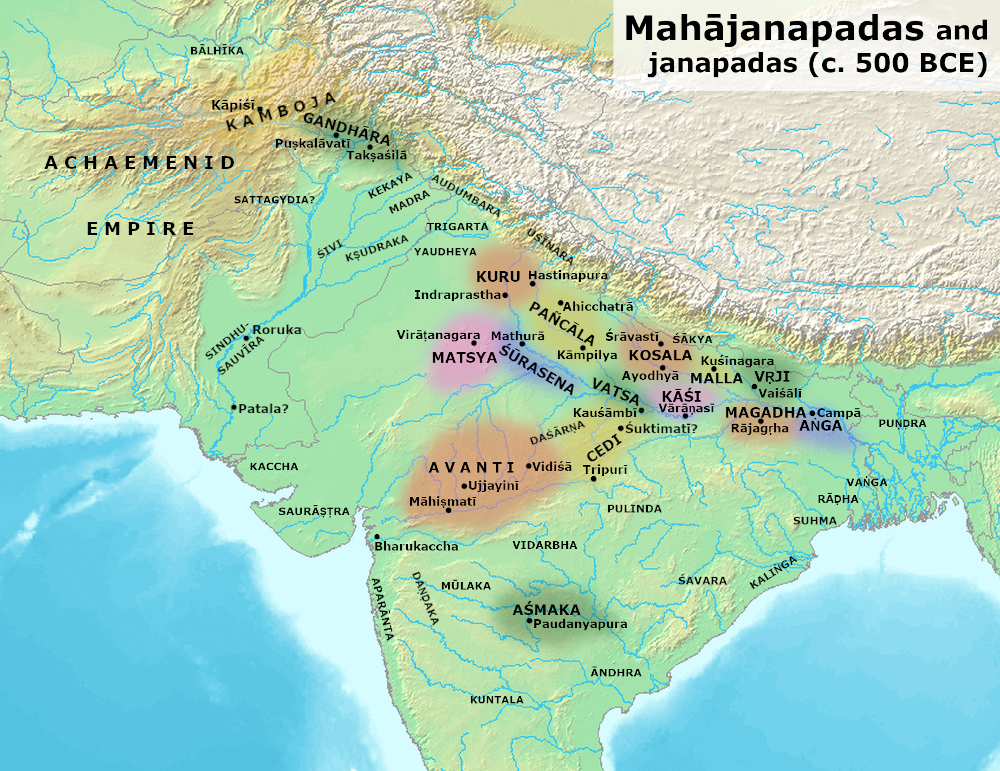

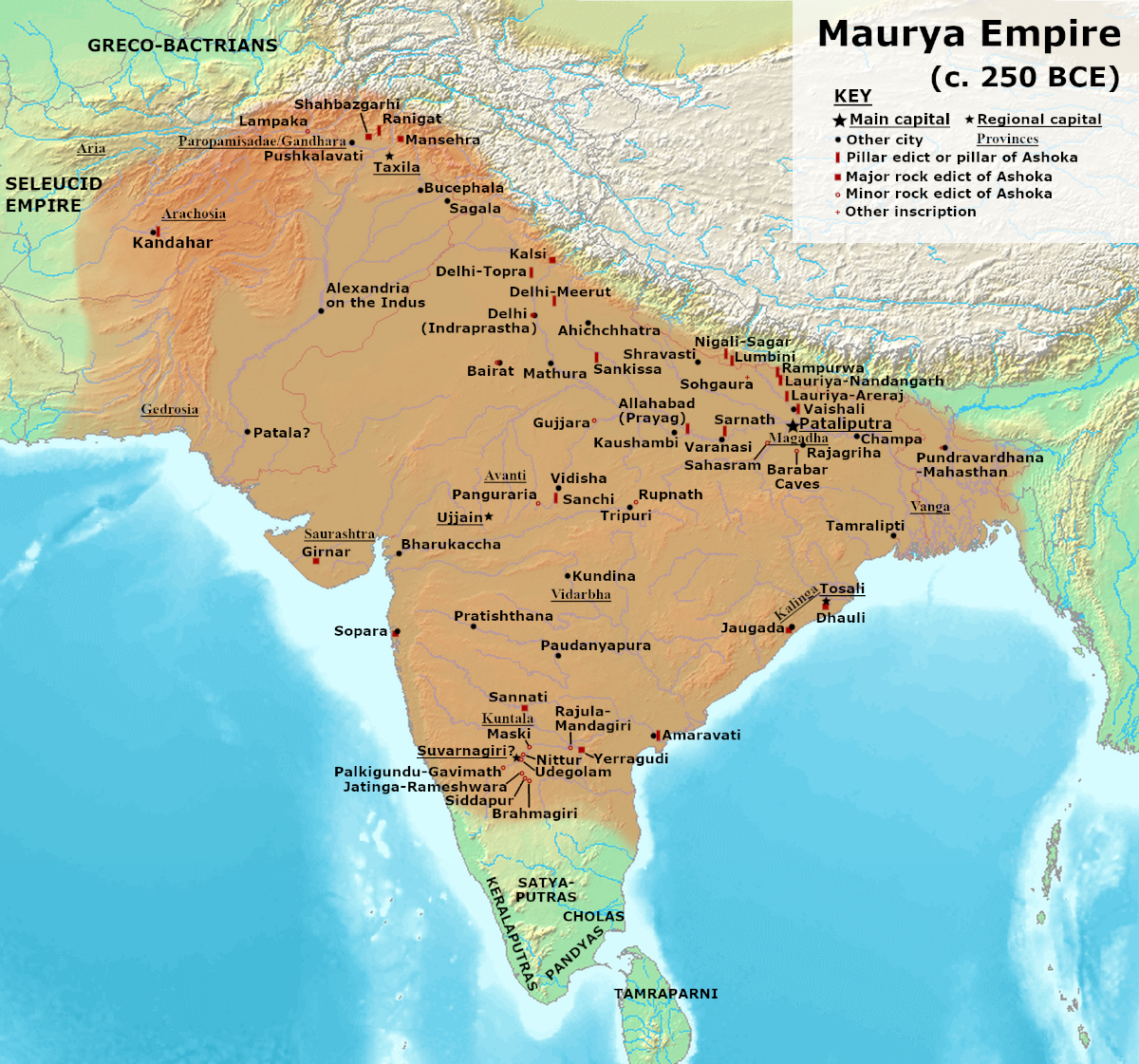


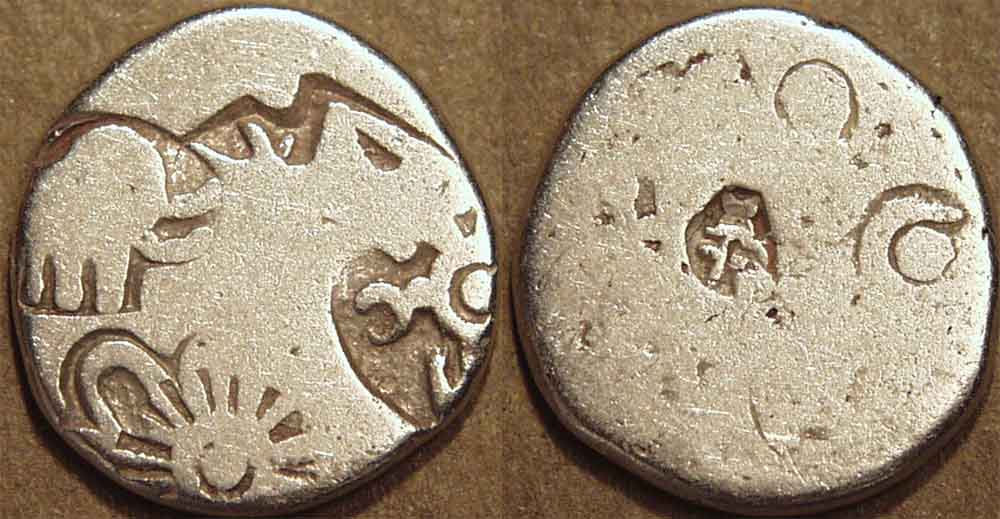

 Weight: 3.43 gm., Dim: 15 x 14 mm.
Weight: 3.43 gm., Dim: 15 x 14 mm.
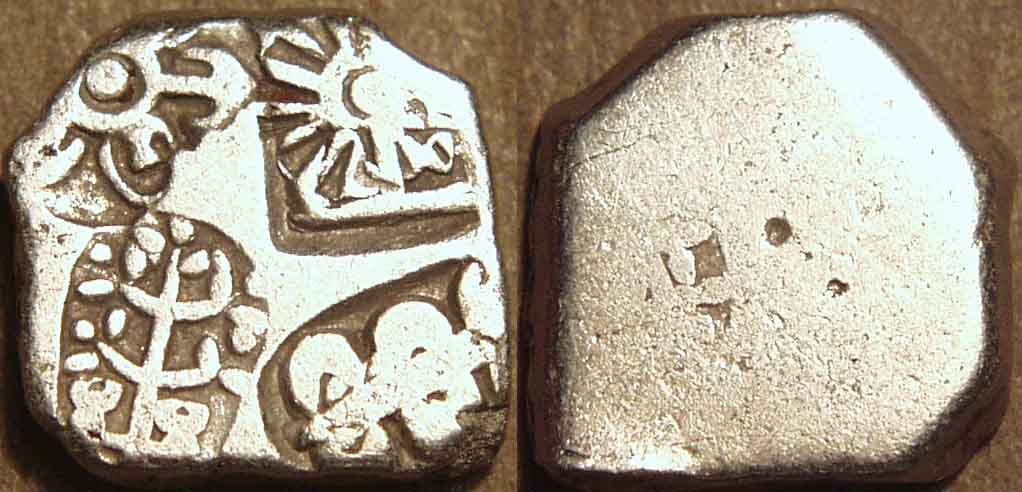 Weight: 3.14 gm., Dim: 13 x 13 mm.
Weight: 3.14 gm., Dim: 13 x 13 mm.
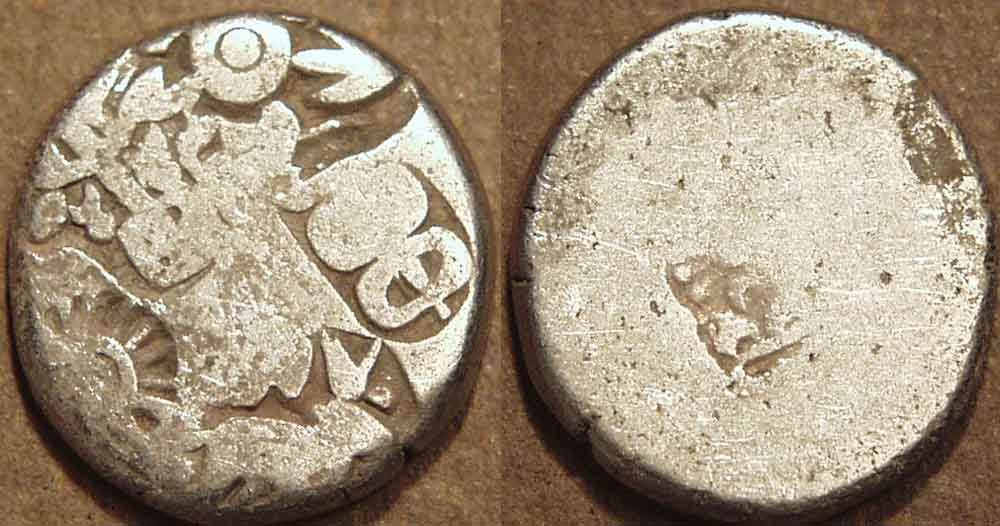 Weight: 3.01 gm., Dim: 15 x 14 mm.
Weight: 3.01 gm., Dim: 15 x 14 mm.
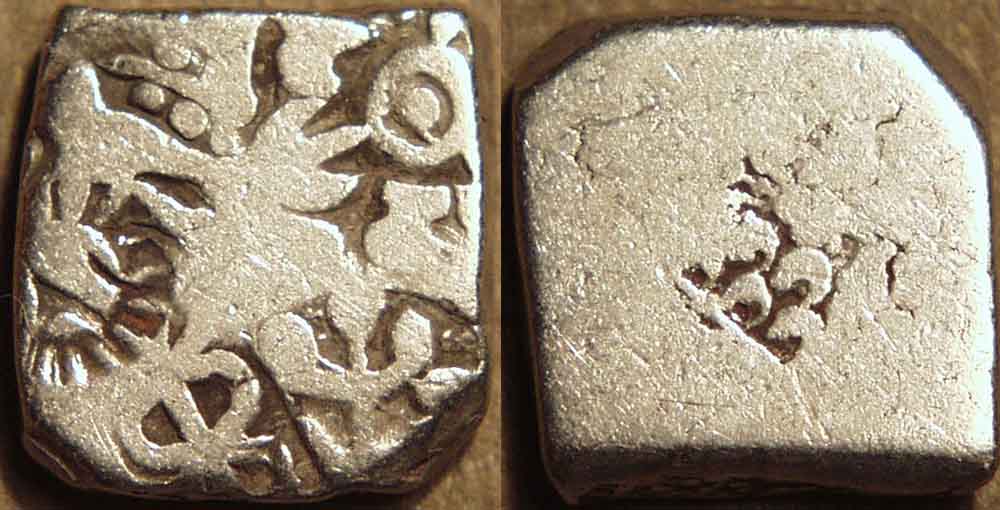 Weight: 3.15 gm., Dim: 12 x 12 mm.
Weight: 3.15 gm., Dim: 12 x 12 mm.
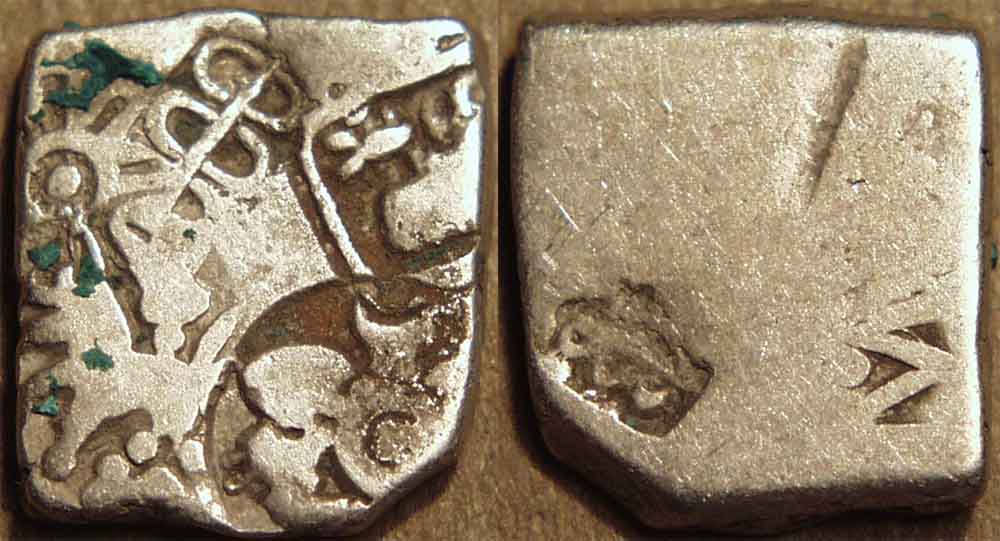

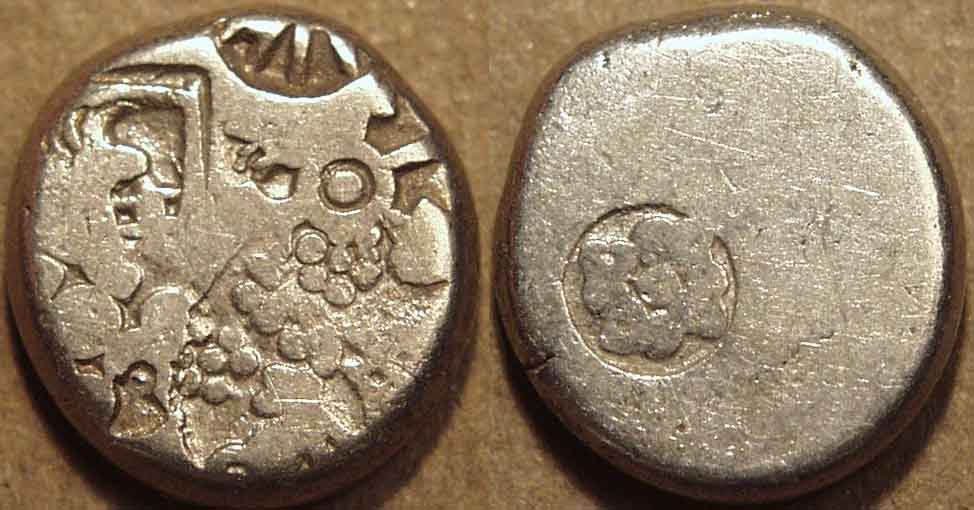 Weight: 3.35 gm., Dim: 13 x 14 mm.
Weight: 3.35 gm., Dim: 13 x 14 mm.
 Weight: 3.06 gm., Dim: 16 x 15 mm.
Weight: 3.06 gm., Dim: 16 x 15 mm.
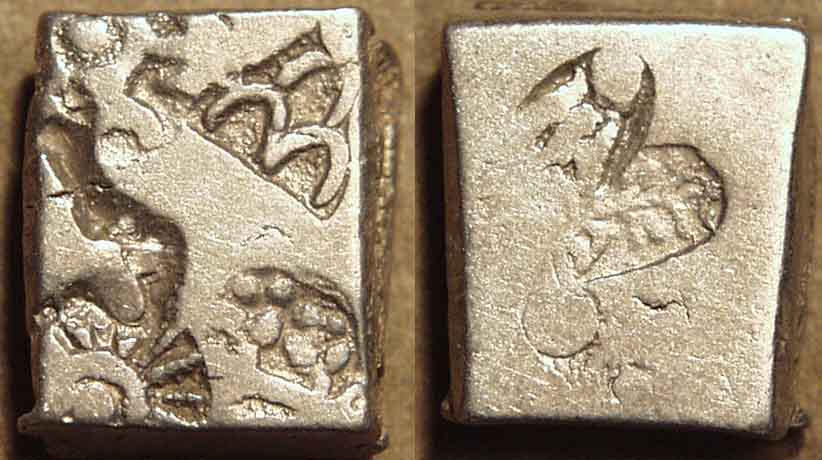 Weight: 3.38 gm., Dim: 16 x 9 mm.
Weight: 3.38 gm., Dim: 16 x 9 mm.
 Weight: 3.43 gm., Dim: 11 x 15 mm.
Weight: 3.43 gm., Dim: 11 x 15 mm.
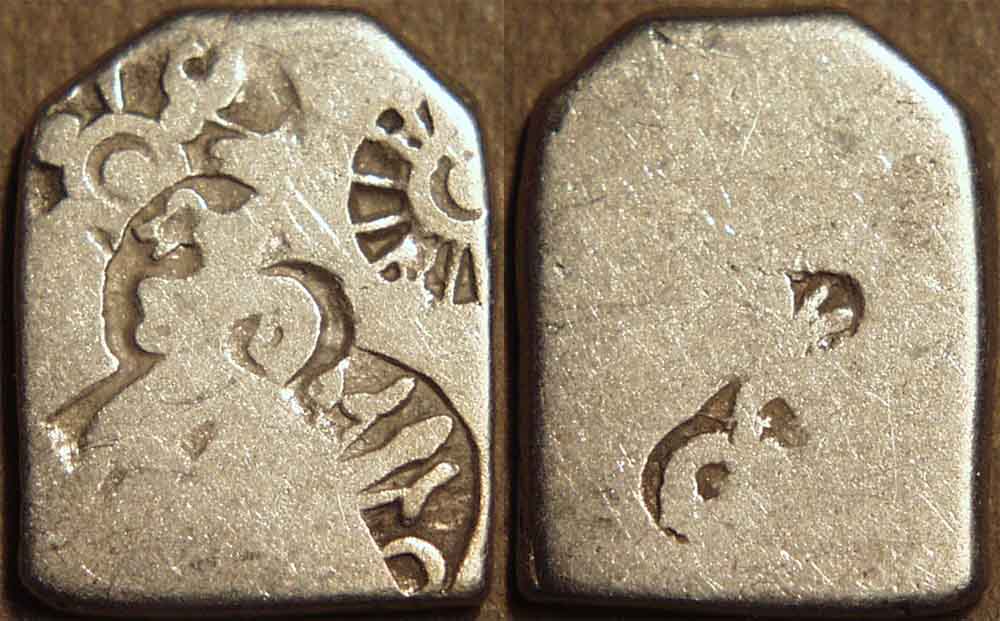 Weight: 3.22 gm., Dim: 13 x 17 mm.
Weight: 3.22 gm., Dim: 13 x 17 mm.
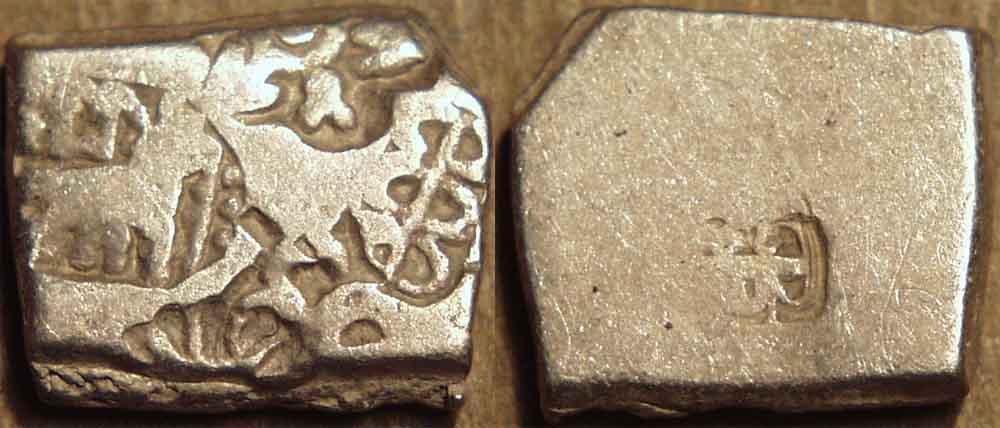 Weight: 3.36 gm., Dim: 13 x 12 mm.
Weight: 3.36 gm., Dim: 13 x 12 mm.
 Weight: 3.08 gm., Dim: 14 x 17 mm.
Weight: 3.08 gm., Dim: 14 x 17 mm.
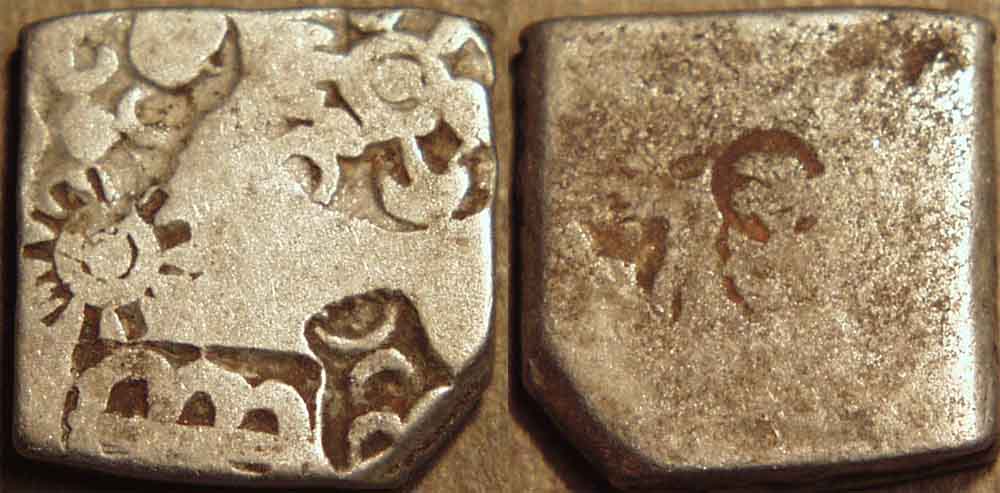 Weight: 3.29 gm., Dim: 13 x 13 mm.
Weight: 3.29 gm., Dim: 13 x 13 mm.
 Weight: 3.37 gm., Dim: 11 x 16 mm.
Weight: 3.37 gm., Dim: 11 x 16 mm.
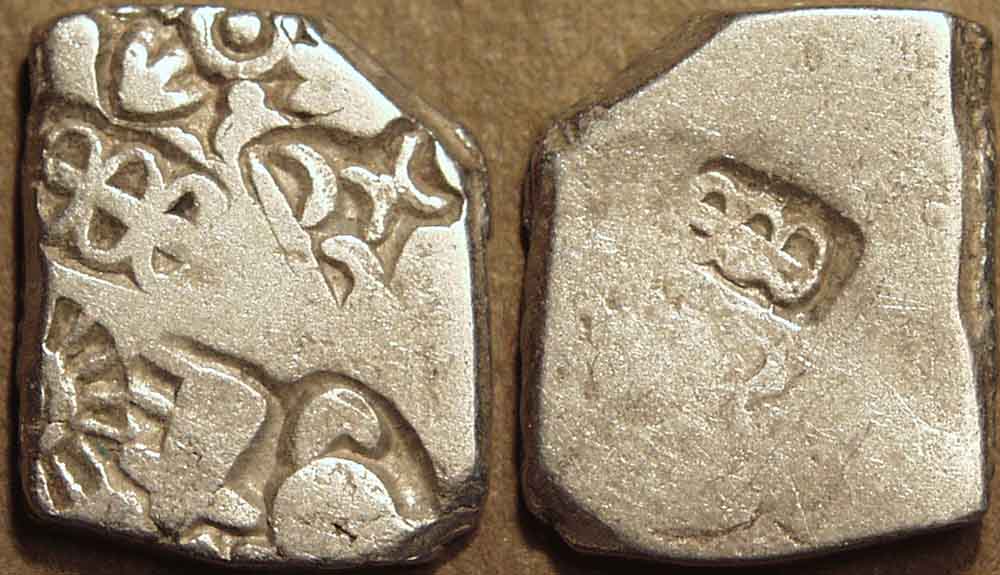 Weight: 3.46 gm., Dim: 13 x 16 mm.
Weight: 3.46 gm., Dim: 13 x 16 mm.
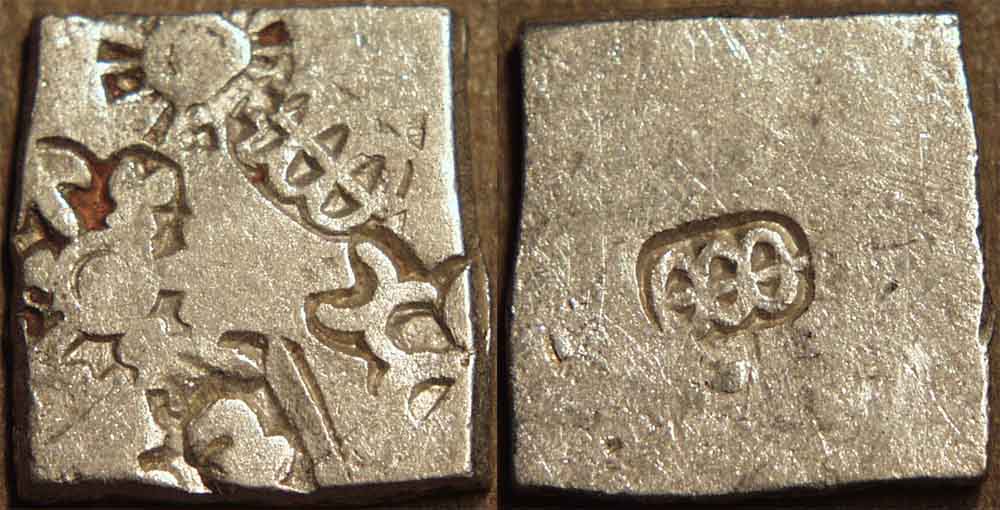 Weight: 3.42 gm., Dim: 16 x 15 mm.
Weight: 3.42 gm., Dim: 16 x 15 mm.
 Weight: 3.28 gm., Dim: 15 x 14 mm.
Weight: 3.28 gm., Dim: 15 x 14 mm.
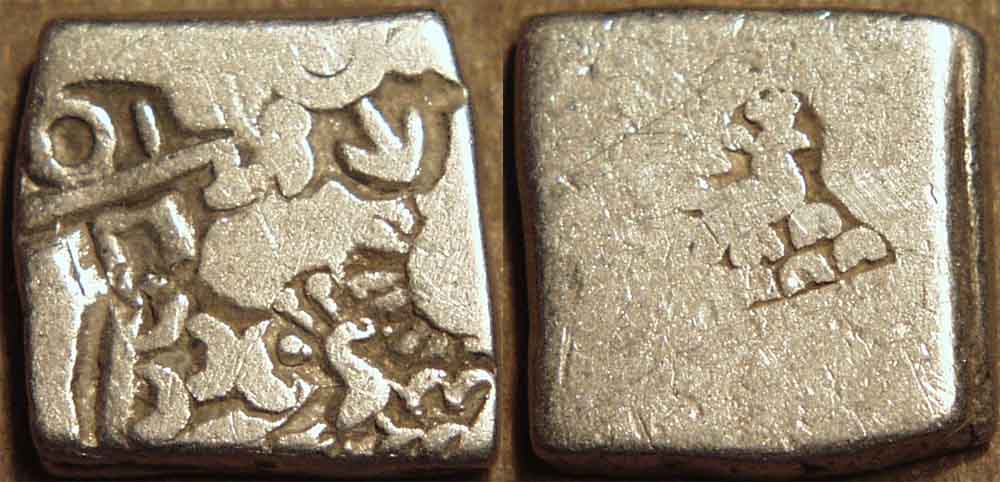 Weight: 2.90 gm., Dim: 14 x 13 mm.
Weight: 2.90 gm., Dim: 14 x 13 mm.
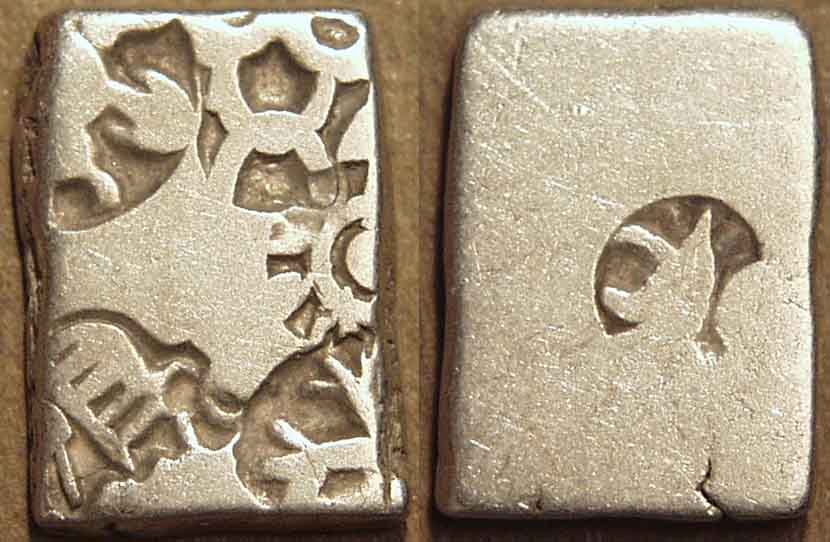 Weight: 3.25 gm., Dim: 12 x 16 mm.
Weight: 3.25 gm., Dim: 12 x 16 mm.
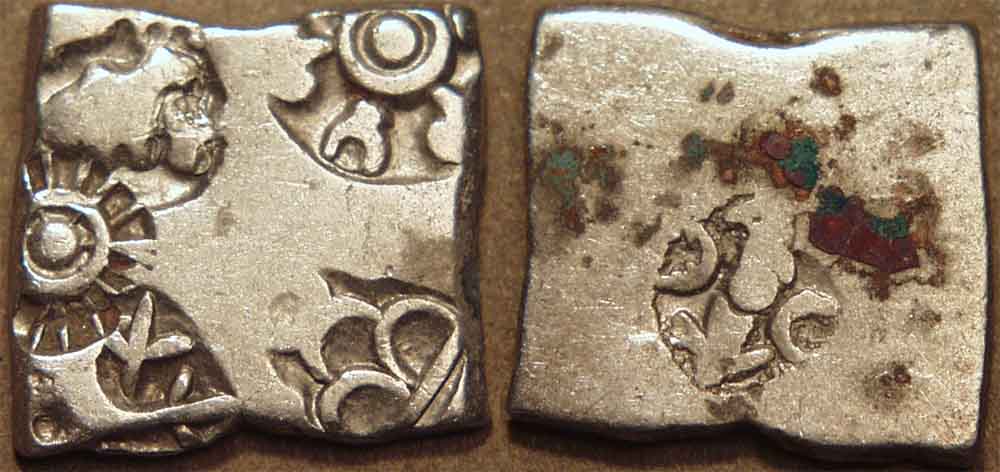 Weight: 3.38 gm., Dim: 16 x 15 mm.
Weight: 3.38 gm., Dim: 16 x 15 mm.
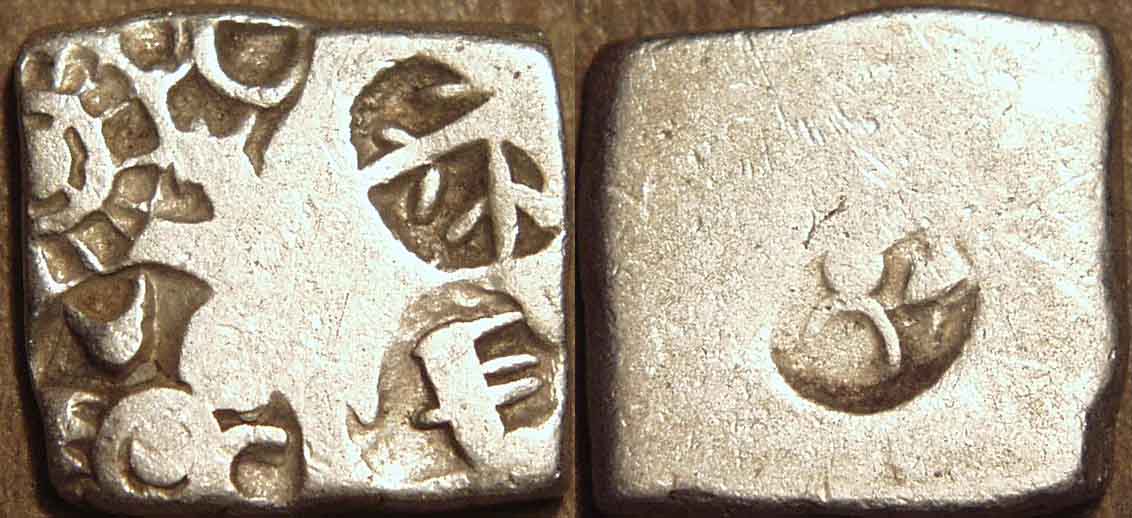 Weight: 2.99 gm., Dim: 15 x 14 mm.
Weight: 2.99 gm., Dim: 15 x 14 mm.
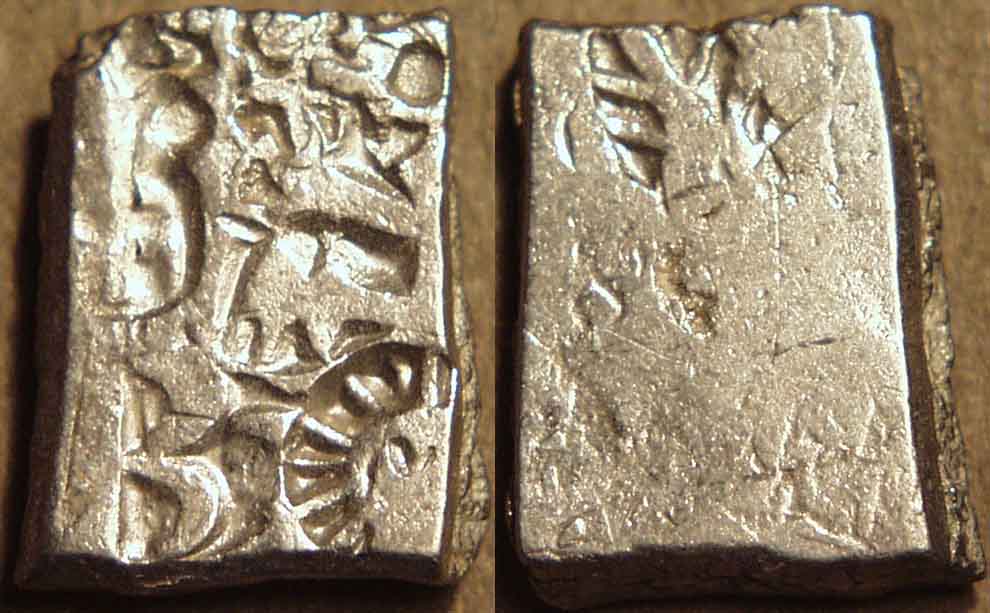 Weight: 3.27 gm., Dim: 11 x 14 mm.
Weight: 3.27 gm., Dim: 11 x 14 mm.
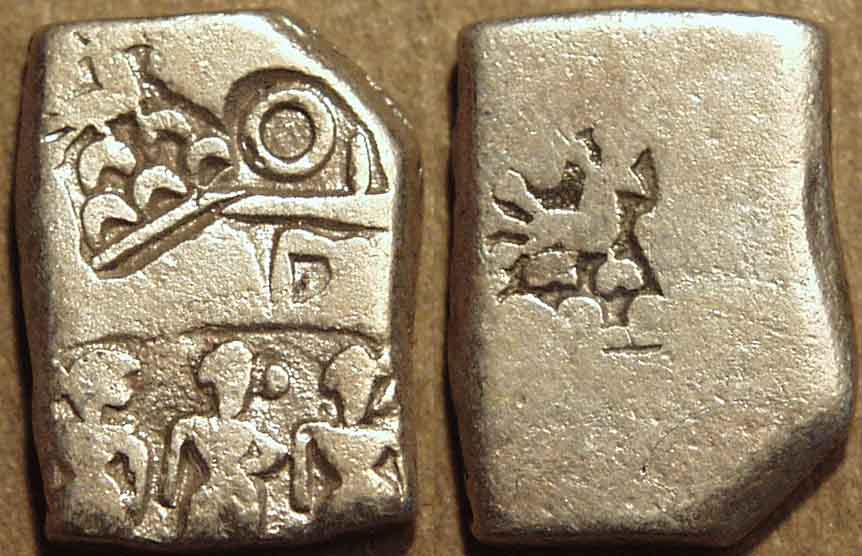 Weight: 2.96 gm., Dim: 10 x 15 mm.
Weight: 2.96 gm., Dim: 10 x 15 mm.
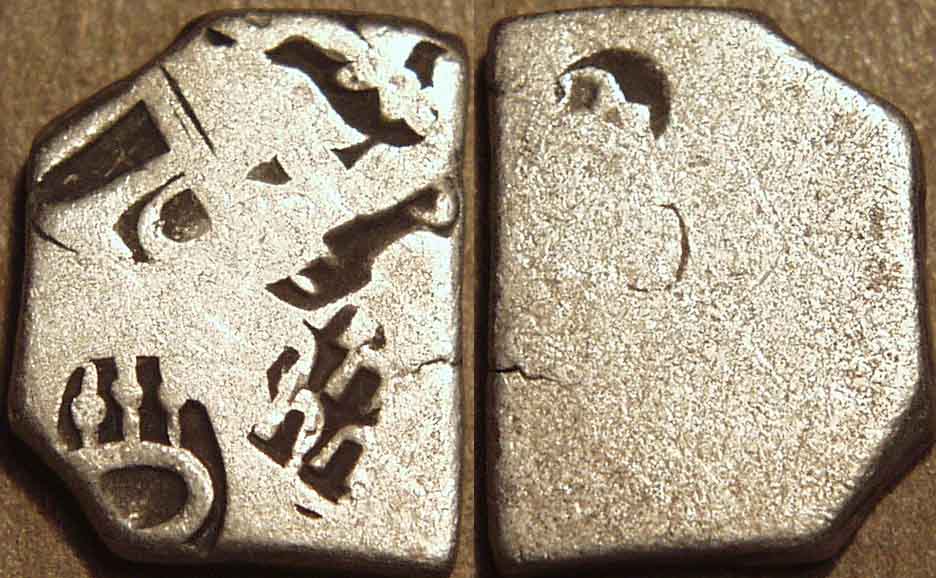 Weight: 3.24 gm., Dim: 12 x 15 mm.
Weight: 3.24 gm., Dim: 12 x 15 mm.
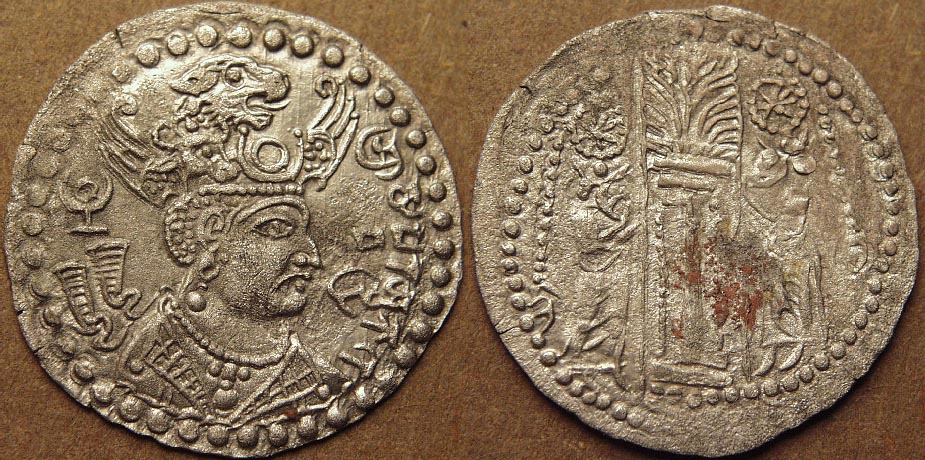 हूण
हूण 
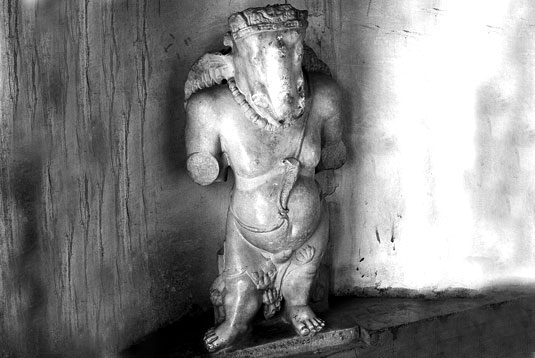







 The shaft-hole axhead is conclusive proof of the Indus Script hypertext signified by the double-headed eagle ligatured to the body of a standing human, with wingsemerging from his shoulders. This hypertext is accompanied with two other hypertexts: winged tiger with feline paws and boar. All three Indus Script hypertexts are read rebus: dula 'pair' rebus: dul 'metal casting' PLUS
The shaft-hole axhead is conclusive proof of the Indus Script hypertext signified by the double-headed eagle ligatured to the body of a standing human, with wingsemerging from his shoulders. This hypertext is accompanied with two other hypertexts: winged tiger with feline paws and boar. All three Indus Script hypertexts are read rebus: dula 'pair' rebus: dul 'metal casting' PLUS 




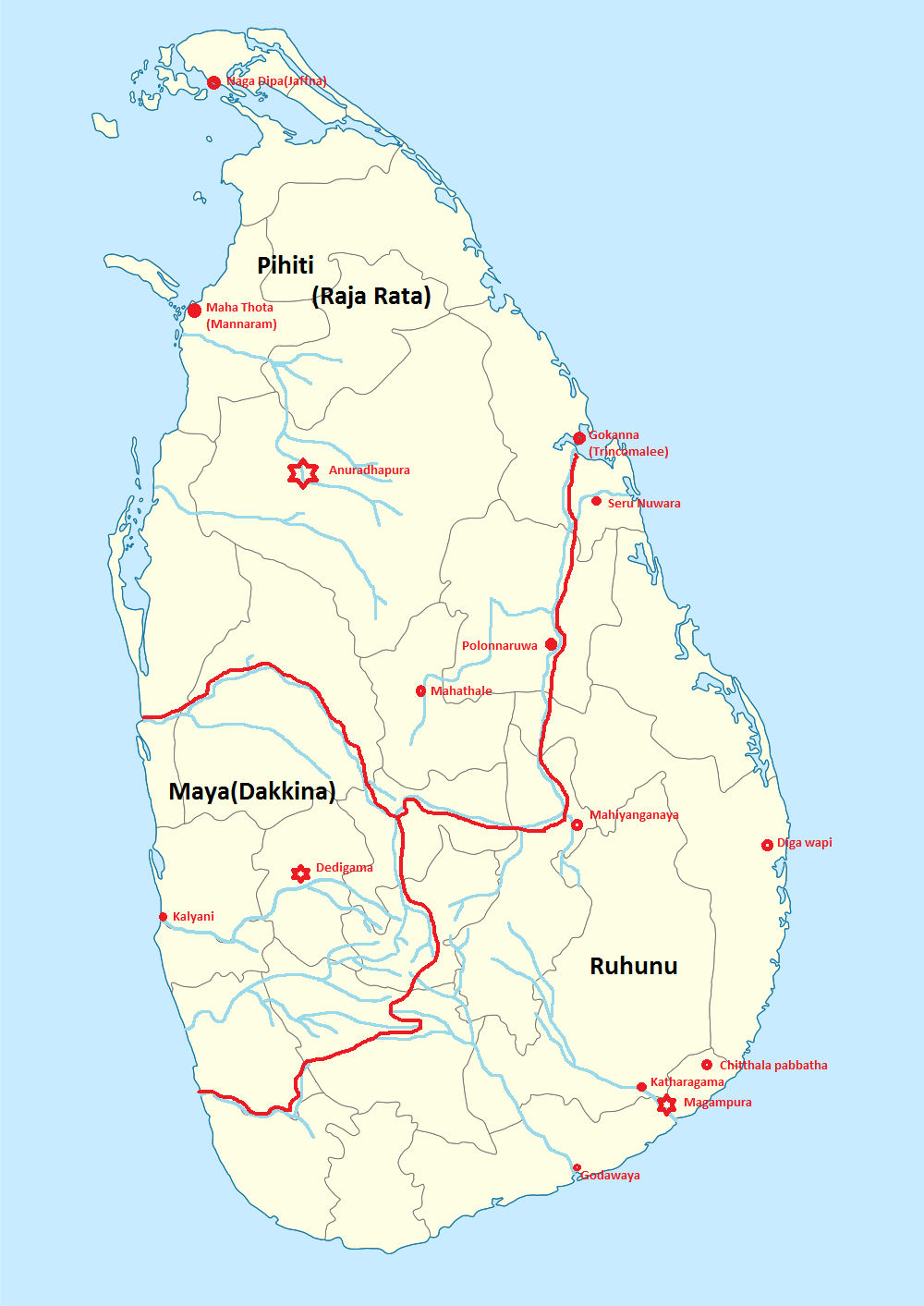
 Ruhuna coin
Ruhuna coin
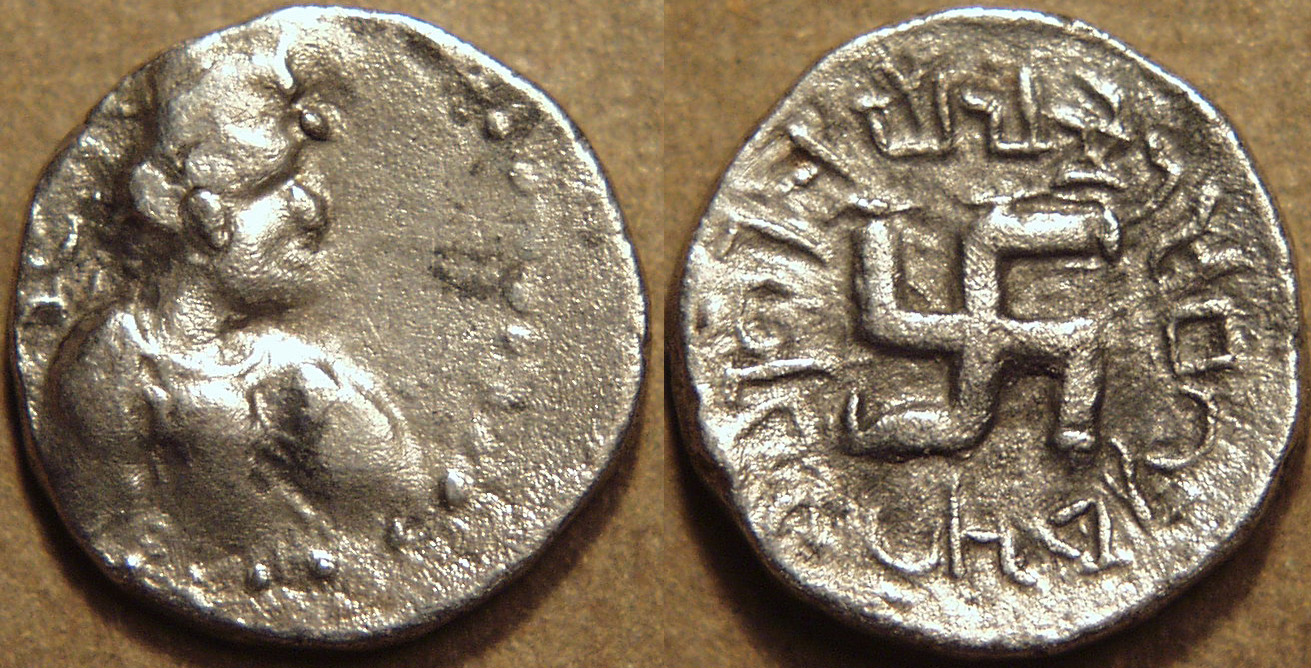 Coin 1: Yolamira, silver drachm, early type
Coin 1: Yolamira, silver drachm, early type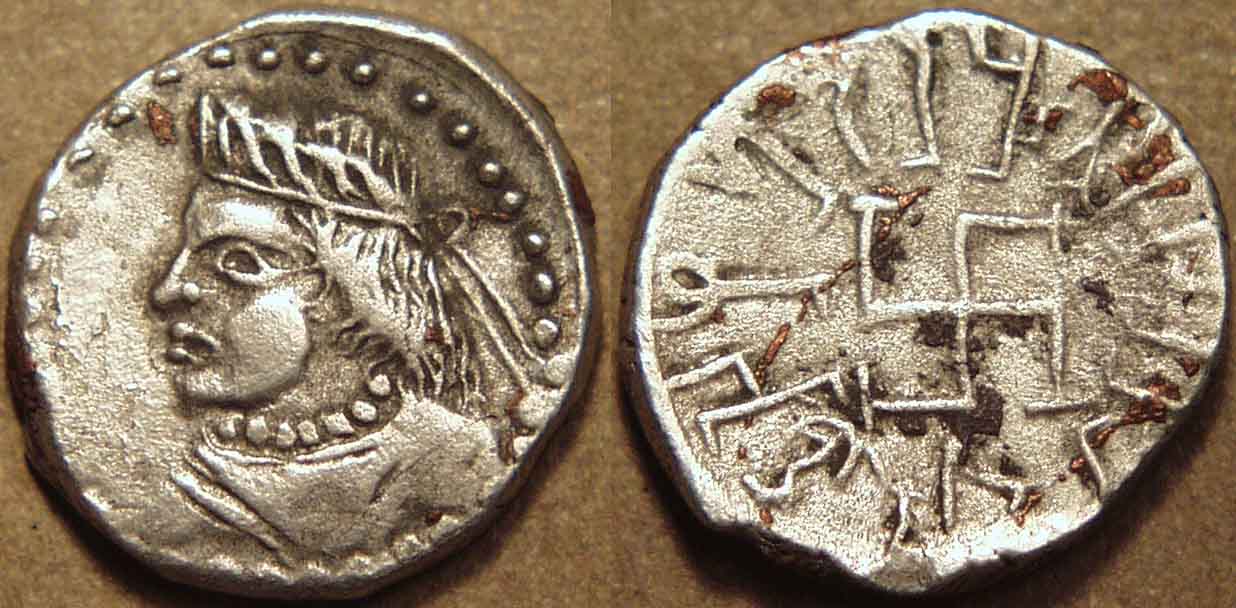

 Coin 24: Datayola II, copper tetradrachm (reduced weight standard)
Coin 24: Datayola II, copper tetradrachm (reduced weight standard)




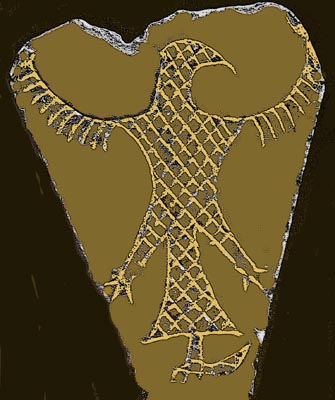











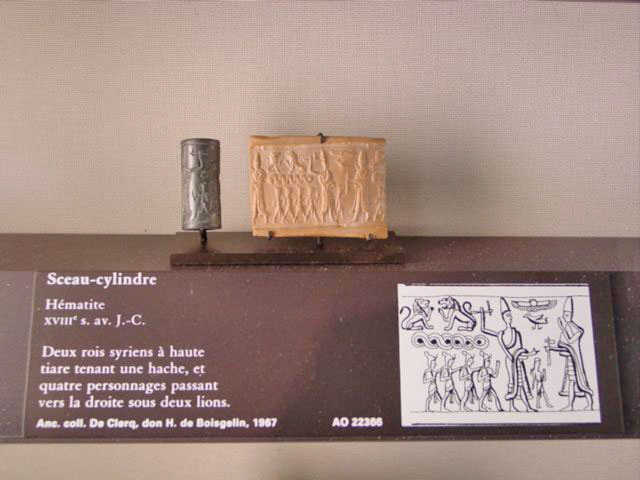


 Santali glosses
Santali glosses


 Twisted rope as hieroglyph on a plaque.
Twisted rope as hieroglyph on a plaque. 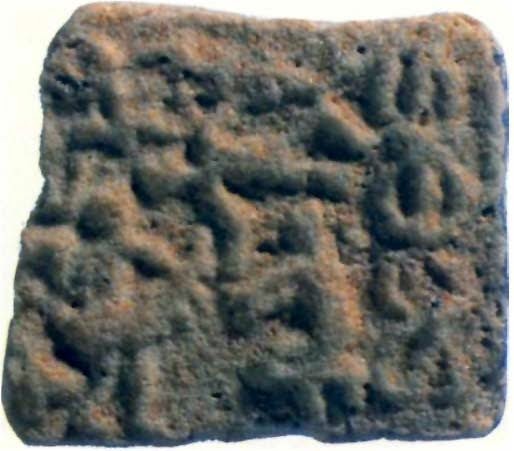










 Location of Kuninda Kingdom.
Location of Kuninda Kingdom. 
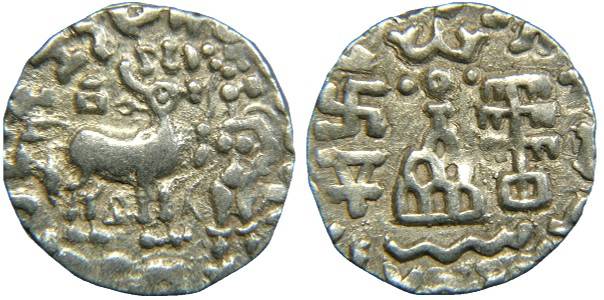











 Ancient Erich city
Ancient Erich city 
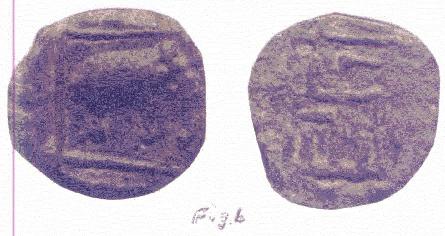


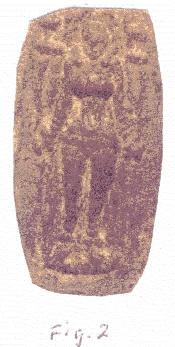
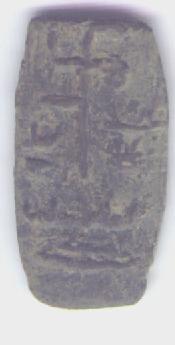 H37 Lead 6.37 gm 32x17 mm from Akurugoda
H37 Lead 6.37 gm 32x17 mm from Akurugoda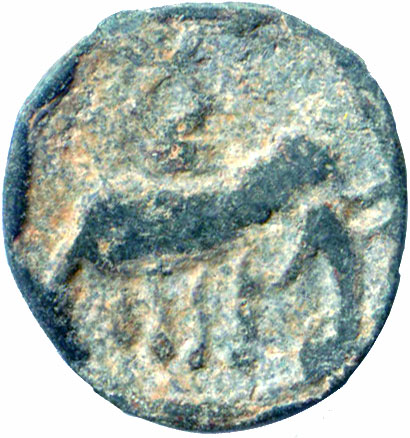







 15 j. Coin of Raja Wickremasinghe- From Anuradhapura.
15 j. Coin of Raja Wickremasinghe- From Anuradhapura.











 Eagle-shaped fire-altar. Soma, atirātra. yajña.
Eagle-shaped fire-altar. Soma, atirātra. yajña. 




 Russian imperial
Russian imperial










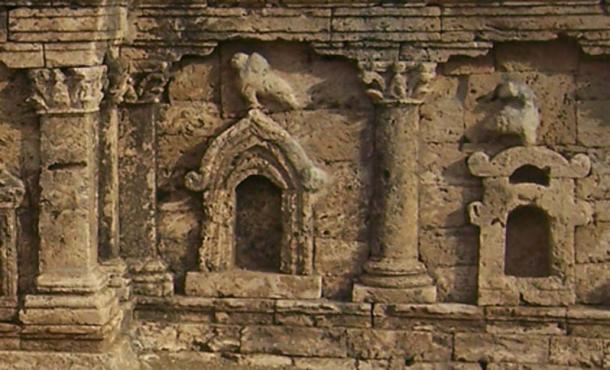











.jpg)
 Ancient Greek tetradrachm coin from Akragas, 410 BCE, with a grasshopper on the right.
Ancient Greek tetradrachm coin from Akragas, 410 BCE, with a grasshopper on the right.

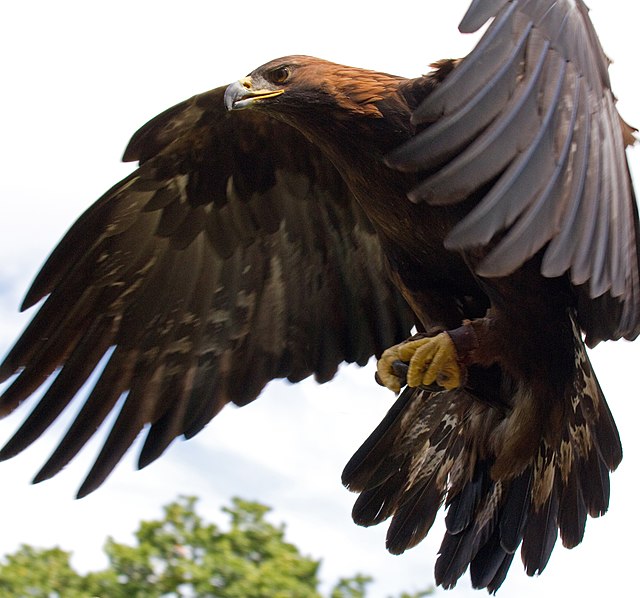

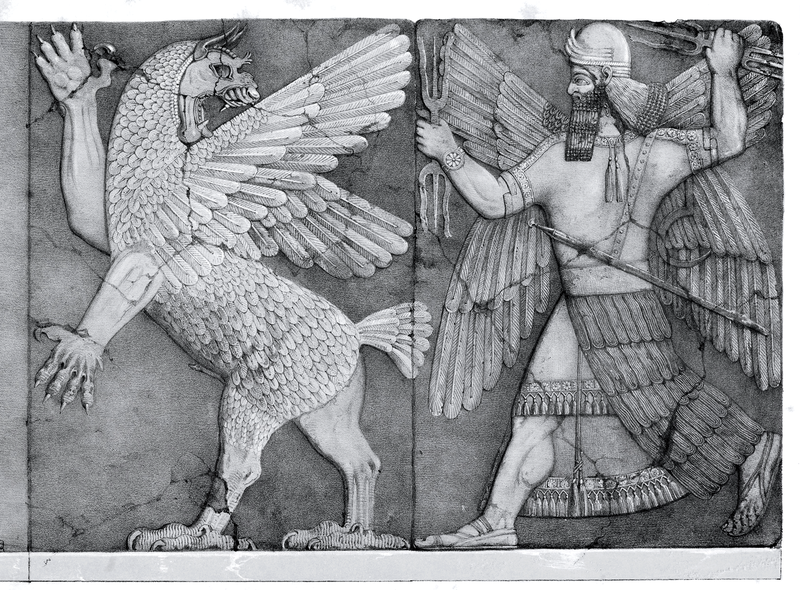





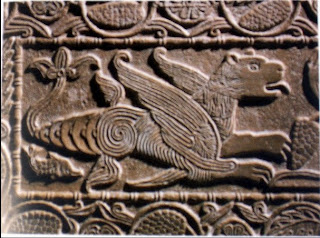





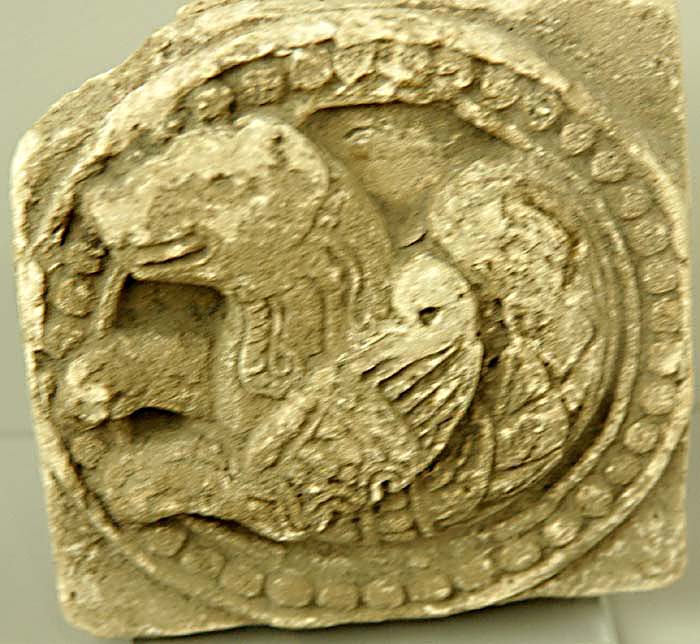
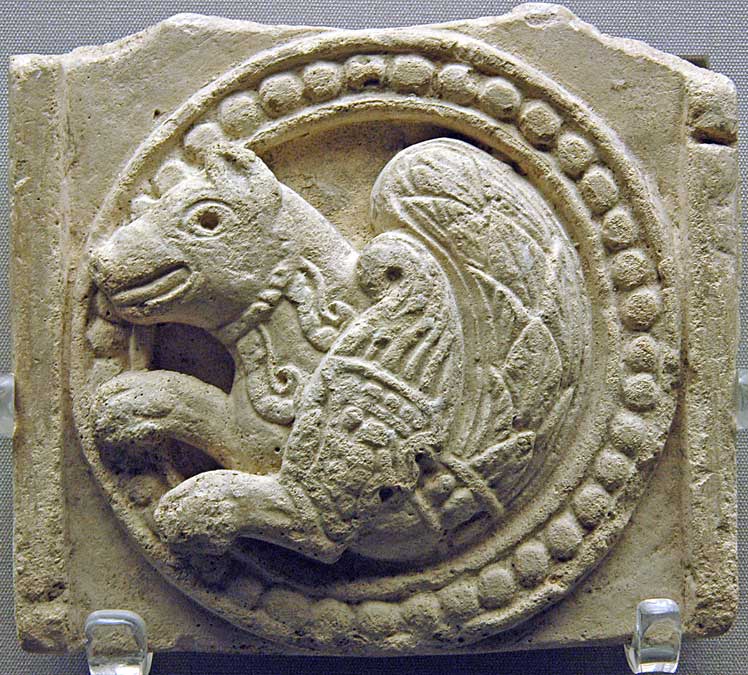















































 m1491A copper tablet Harappa Script Corpora
m1491A copper tablet Harappa Script Corpora Mohenjo-daro Seals m1118 and Kalibangan 032 (with fish and arrow hieroglyph)
Mohenjo-daro Seals m1118 and Kalibangan 032 (with fish and arrow hieroglyph)

 m1521A copper tablet. Harappa Script Corpora
m1521A copper tablet. Harappa Script Corpora

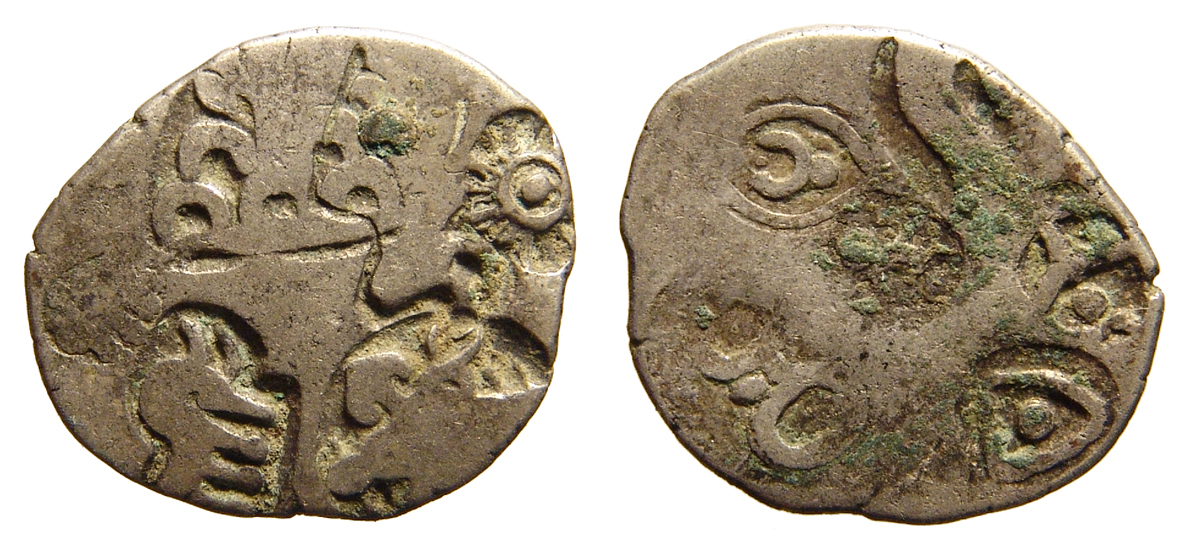
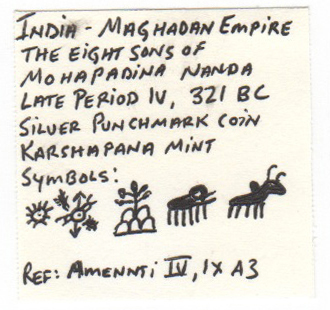




















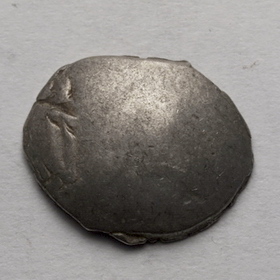

 Sunga 185-75 BCE karabha'trunk of elephant' ibha 'elephant' rebus:
Sunga 185-75 BCE karabha'trunk of elephant' ibha 'elephant' rebus: 
 Kausambi 200 BCE
Kausambi 200 BCE kola 'tiger' rebus: kol'blacksmith' karabha 'trunk of elephant' ibha 'elephant' rebus:
kola 'tiger' rebus: kol'blacksmith' karabha 'trunk of elephant' ibha 'elephant' rebus: 
 Taxila. Pushkalavati 185-160 BCE Karshapana
Taxila. Pushkalavati 185-160 BCE Karshapana Kalinga. Copper punch-marked 3rd cent. BCEarka 'sun' rebus: arka 'copper gold'
Kalinga. Copper punch-marked 3rd cent. BCEarka 'sun' rebus: arka 'copper gold'



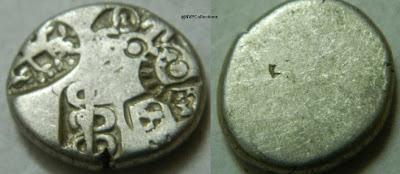 Silver punch-marked
Silver punch-marked Asmaka
Asmaka
 Vidarbha janapada
Vidarbha janapada





